These 30 kinds of flowers cannot be killed by the sun. The more they are exposed to the sun, the more they bloom and they can bloom for more than half a year!
It's the end of the month again. Even though there are flowers blooming everywhere now, the weather is getting hotter and hotter. In another month, the flowers at home will begin to wither... It is better to take advantage of the right temperature now and grow some flowers that are not afraid of heat or sun. The more sun there is, the more flowers will bloom, and you can enjoy flowers at home in summer!
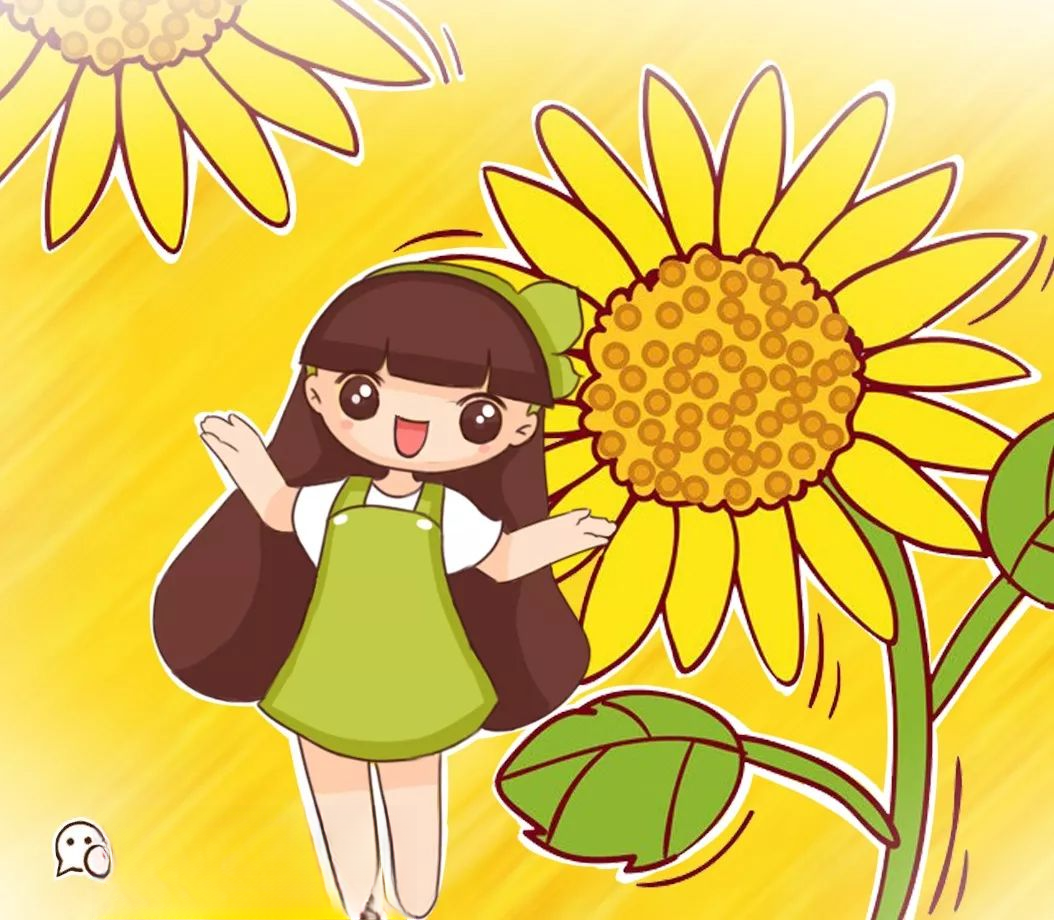
Extreme temperature: 40 degrees
As the name suggests, the sunflower blooms more beautifully and brilliantly under strong sunshine. The key is that it is easy to grow and is commonly known as "immortal". Just pinch a branch and stick it in the soil, and it will bloom within half a month.
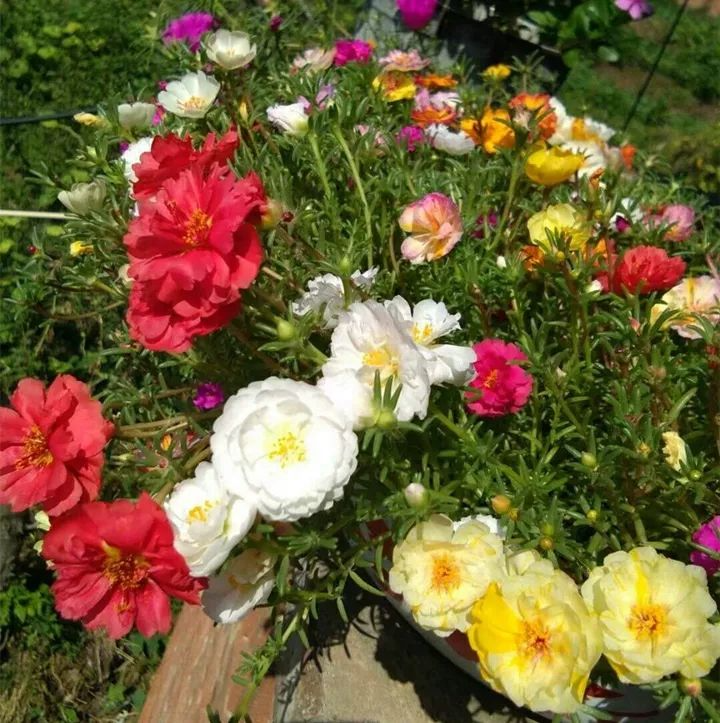
Image by: Minminjiang89
Maintenance focus:
3 cm long sunflower branches can be used for cuttings. First, wet the soil, then insert it firmly, and expose it to the sun directly. It will take root in 2-3 days, and the cuttings will bloom in 10 days. Single-petal sunflowers can be harvested for seeds after blooming, while double-petal sunflowers are mostly grown by cuttings.
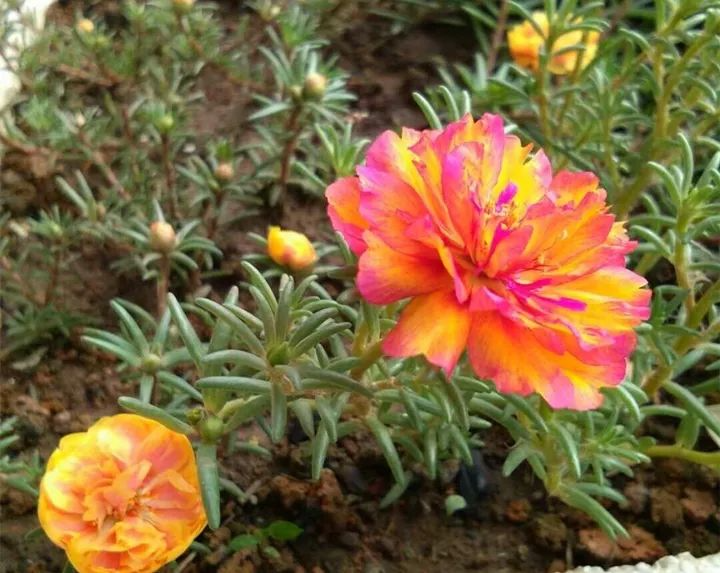
Image by: Minminjiang89
Extreme temperature: 40 degrees
It is said that "jasmine can't be killed by the sun". Jasmine grows most vigorously in summer. Buds can appear above 20 degrees and the fastest flowering speed is above 30 degrees. The fragrance of the flower becomes stronger with more exposure to the sun. Growing a pot of it can fill the house with fragrance.
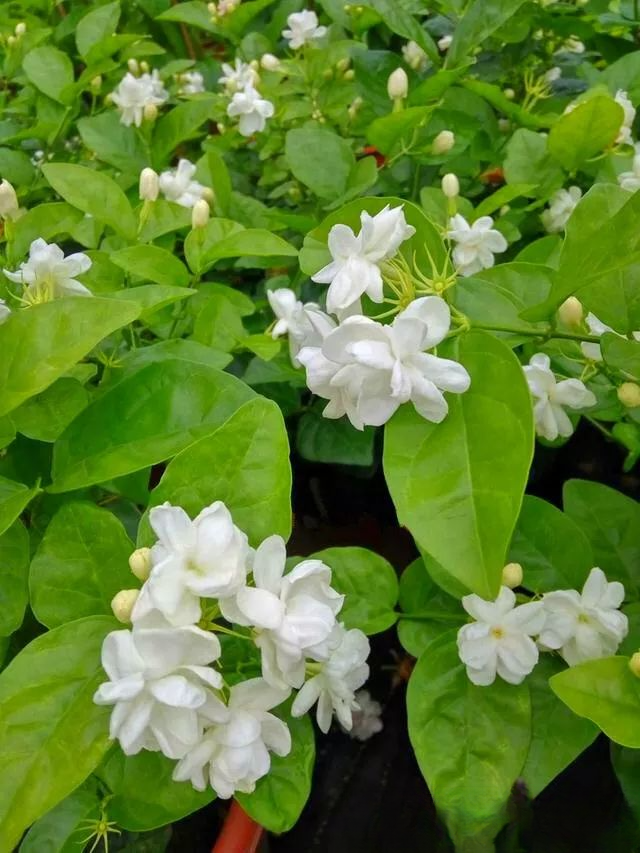
Maintenance focus:
Jasmine is not afraid of heat or sun. It blooms quickly and falls quickly. You should cut the flowers off immediately after they fall. Cut off the two pairs of leaves on the top of the branch. This will save nutrients and stimulate the jasmine to bloom again. It can bloom 3-5 times a year. Don't forget it.
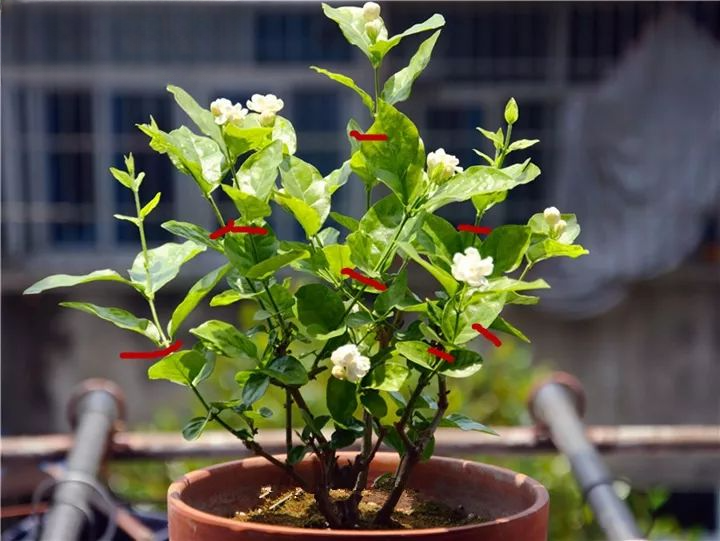
Image by: Dawn
Extreme temperature: 39 degrees
There are many varieties of roses, most of which like light. More sun exposure not only makes them bloom better, but also less likely to get sick. Among them, the varieties that perform well in summer and are not afraid of the sun and heat are as follows:
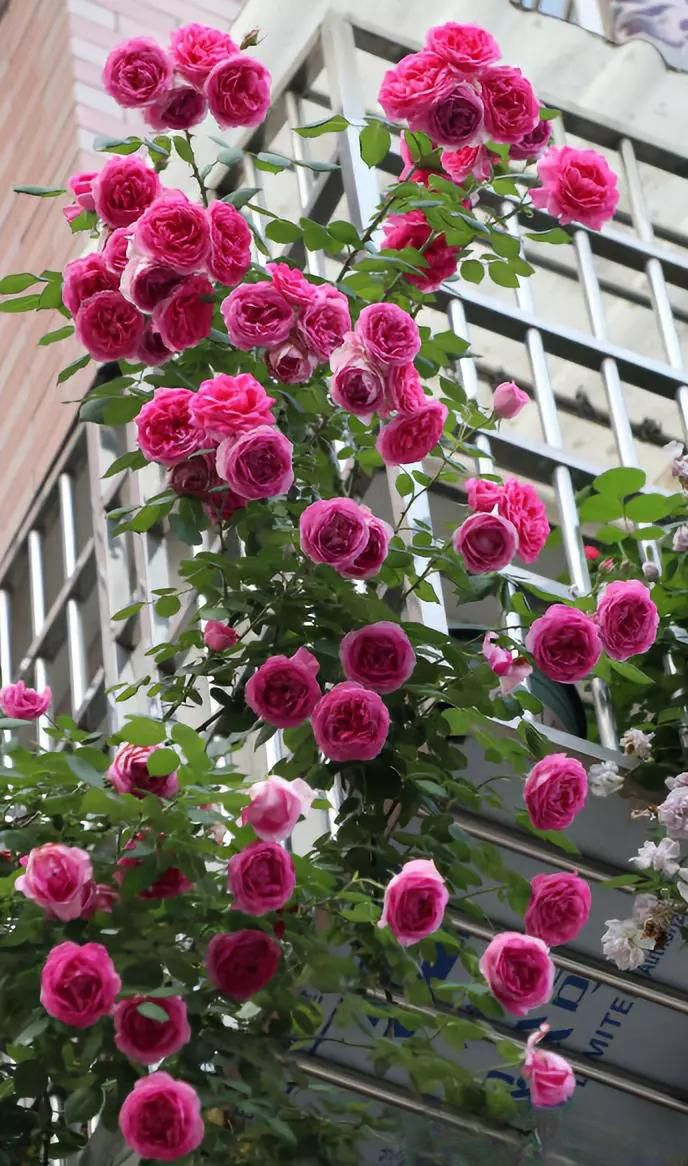
Vines: Grand Parade, Red Lonza Gem, Pink Da Vinci, Little Eden, Angel from the Rose Kingdom, Ella Pompom, Angela, Colorful Butterfly, etc.
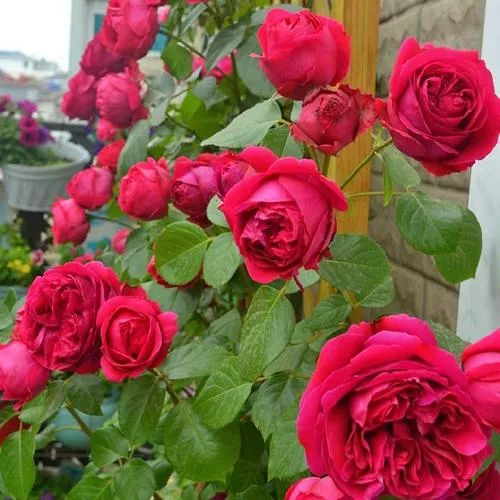
Upright large-flowered shrubs: Summer Fireworks, True Sky, Misaki, Royal Rouge, Arabian Nights, Blue Storm, Kodan, Julio, Red Apple, Red Lace, Porch Pompoms, Cream Ronzard, Lady of the Camellias, Four Hearts, Romantic Orange, etc.
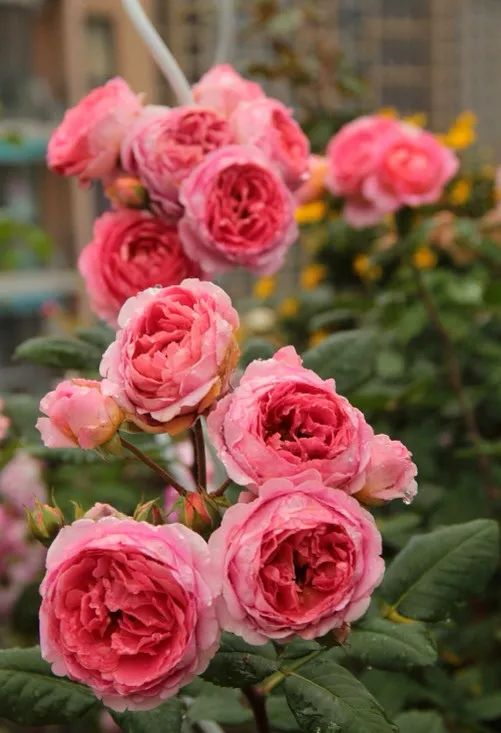
Miniature roses (with smaller flowers): Canary, Aunt Marge, Sweet Carriage, Romantic Baby, Hiding, Fairy Zero, Door of Happiness, Comet, Bath in Snow, etc.
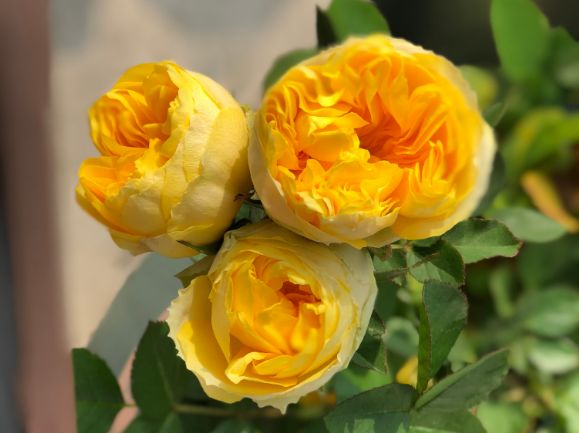
Extreme temperature: 38 degrees
If you like hydrangeas but your home is very sunny in the summer, you can grow a pot of blue snow flowers. It can be grown as a potted plant or as a climbing vine. The more sun it gets, the more dreamy the blue will be. It looks cool and refreshing in the summer and can climb up the wall in 2 months.
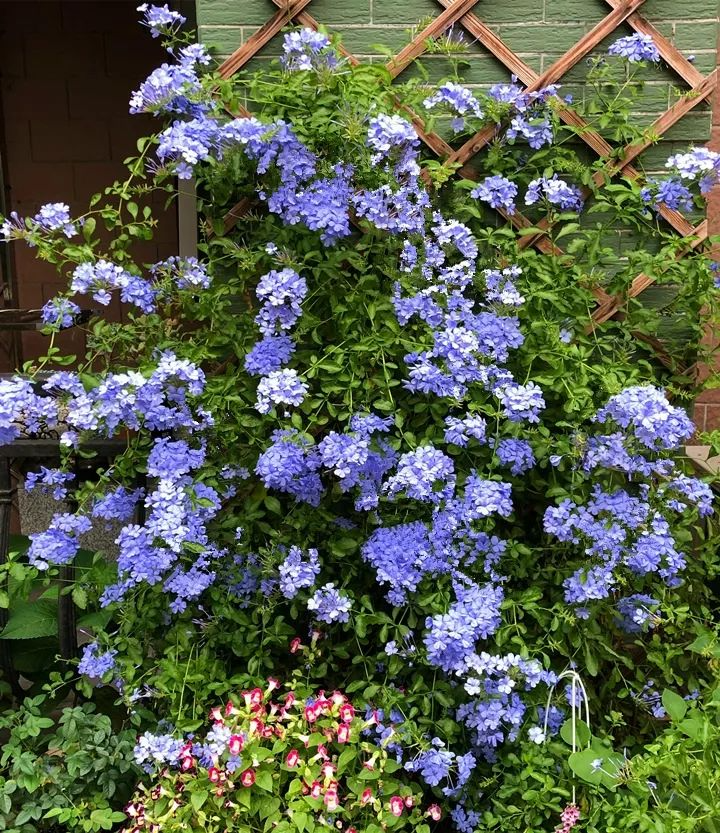
The Blue Snow Waterfall in the picture below is a seedling planted by a flower lover in Jiangxi three years ago. The coldest temperature in winter is minus 9 degrees Celsius, and the highest temperature in summer is around 40 degrees Celsius. Except for burying some chicken manure fertilizer in the spring, it basically relies on the weather for its survival.
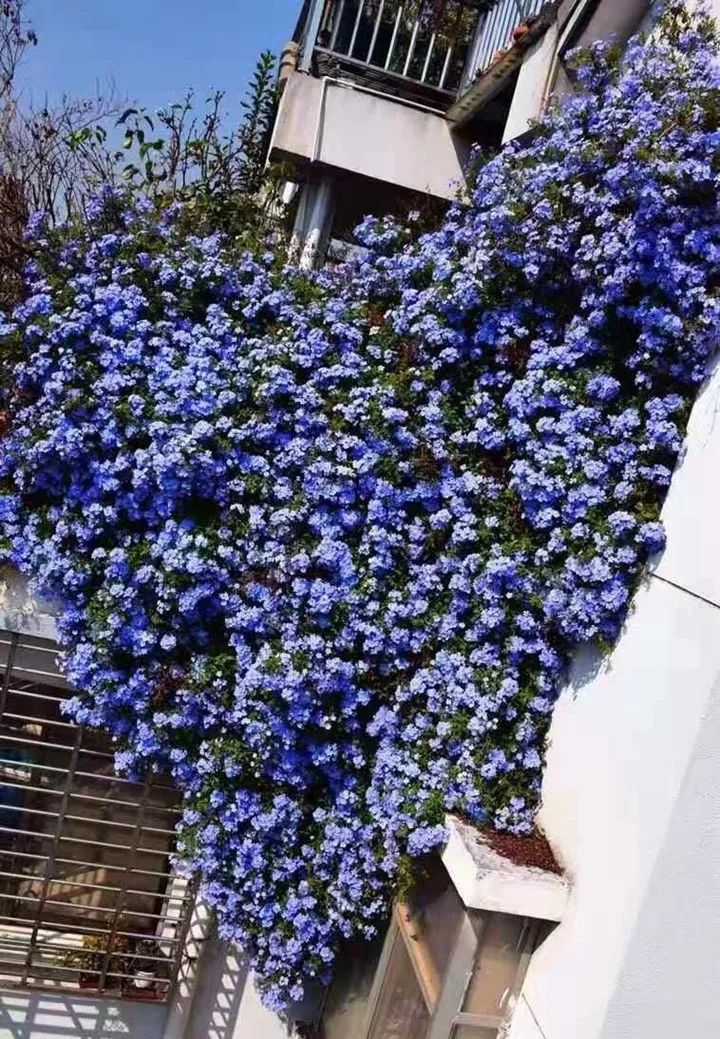
Image by: Jiangxi QS Cross Stitch
Maintenance focus:
Blue snow flower likes acid, and acidic leaf mold or coconut coir soil is suitable for potting. It requires a lot of water for flowering, so it needs to be watered every 1-2 days. Appropriate fertilizer should be applied before and after flowering. Phosphorus-based fertilizers such as Huaduoduo No. 2 or potassium dihydrogen phosphate can be used to ensure a faster second flowering.
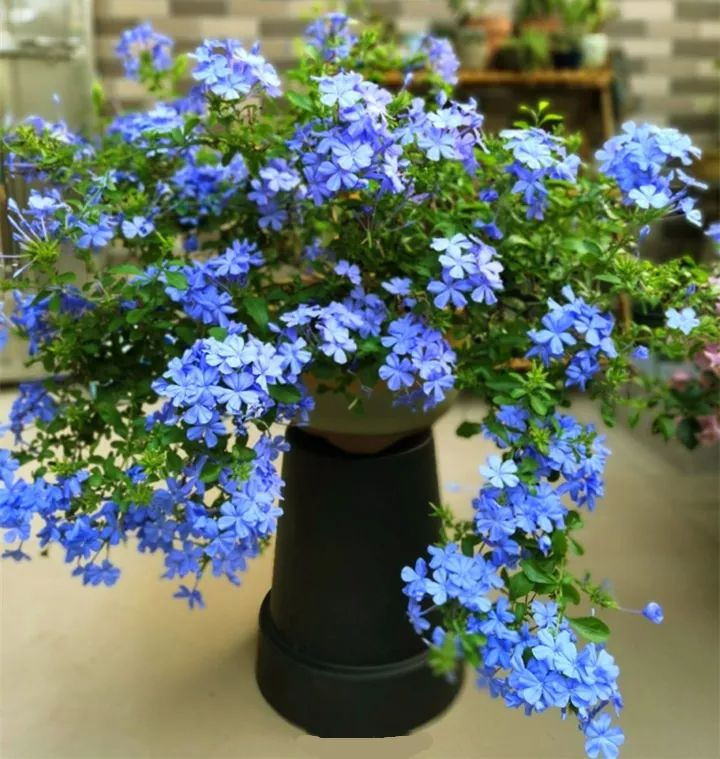
Image by: Stella Ruier
Extreme temperature: 39 degrees
The bowl lotus is fresh and beautiful. It can be grown in an ordinary-sized pot. Soak the seeds in April or May, and it will bloom in summer. You can enjoy the lotus and smell its fragrance at home without leaving.
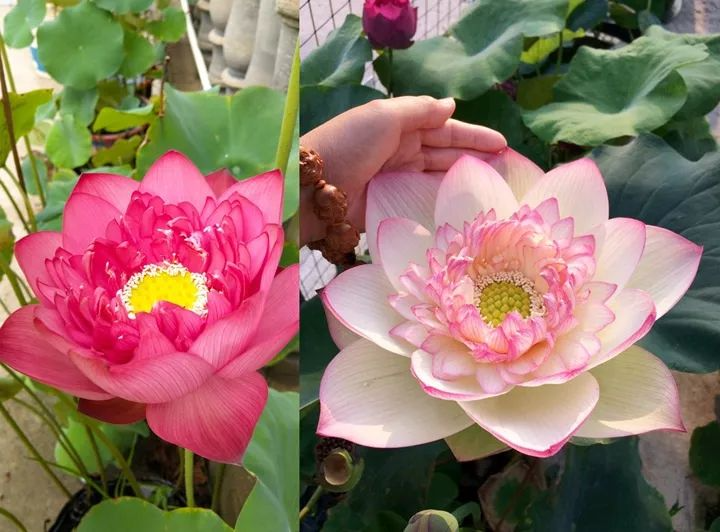
Image by: Crazy Douluo
Another plant you can grow at home is water lilies, which can be grown in a deep plate. Unlike bowl lotus, the leaves and flowers of water lilies float on the water and have a shiny surface.
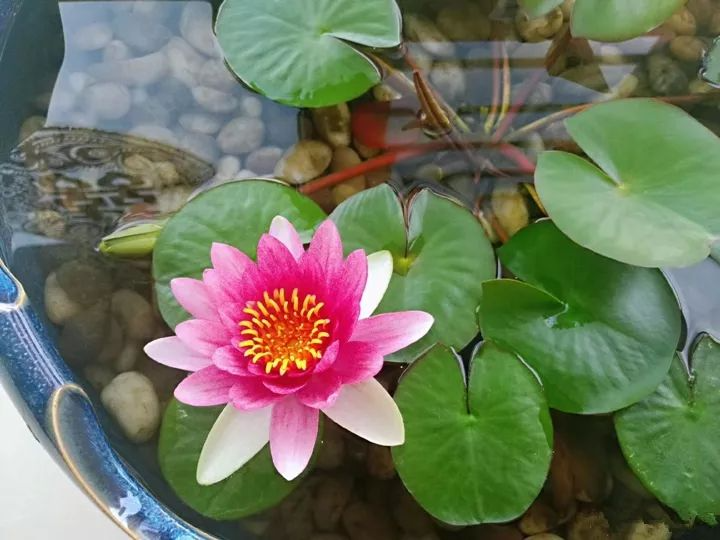
Image by: Crazy Douluo
Maintenance focus:
You can buy lotus seeds to sow lotus, or you can buy a piece of lotus root and plant it directly. The seeds have hard shells and need to be cut and put in water to germinate. After the buds are 10 cm, put them in a basin of water, add a little soil or pond mud to cover them, and expose them to the sun for more than 4 hours a day for faster flowering.
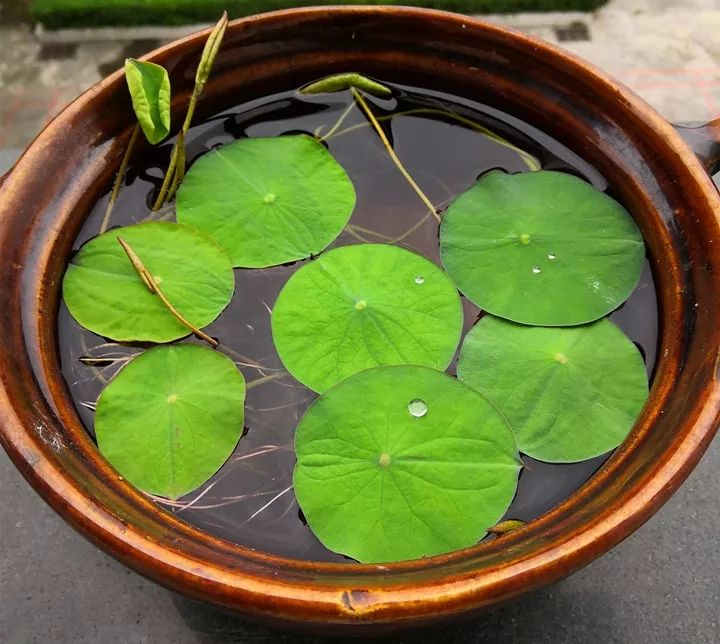
Extreme temperature: 38 degrees
Sunflowers grow and bloom from June to August. These three months are almost the hottest time of the year. Sunflowers bloom towards the sun, and as the sun rises in the east and sets in the west, the sunflower disk will also rotate.
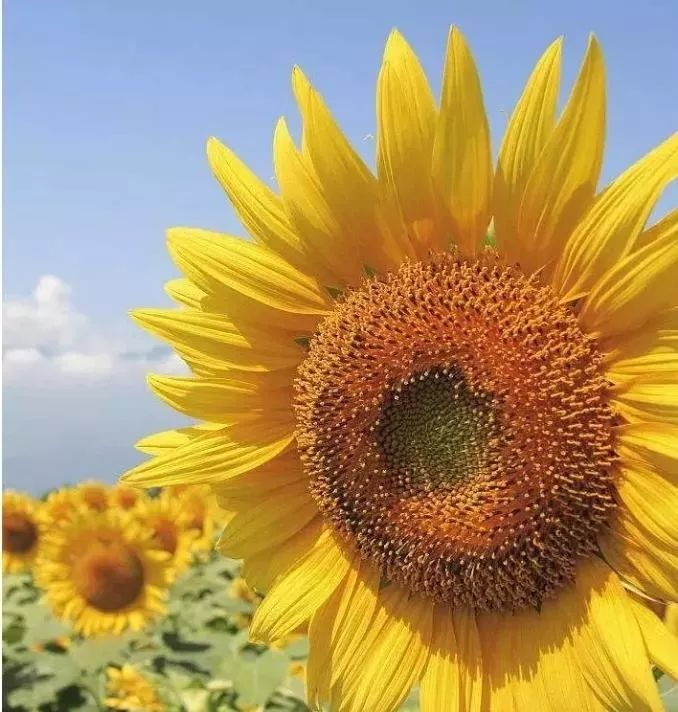
In addition to the sunflowers that we are more familiar with and that produce seeds, some new varieties have become popular in recent years, such as Teddy Bear. Its golden furry leaves are very cute. It is shorter than traditional sunflowers, and many people like to grow it.
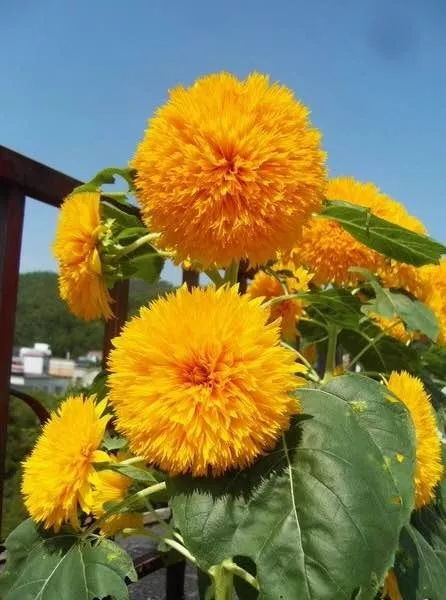
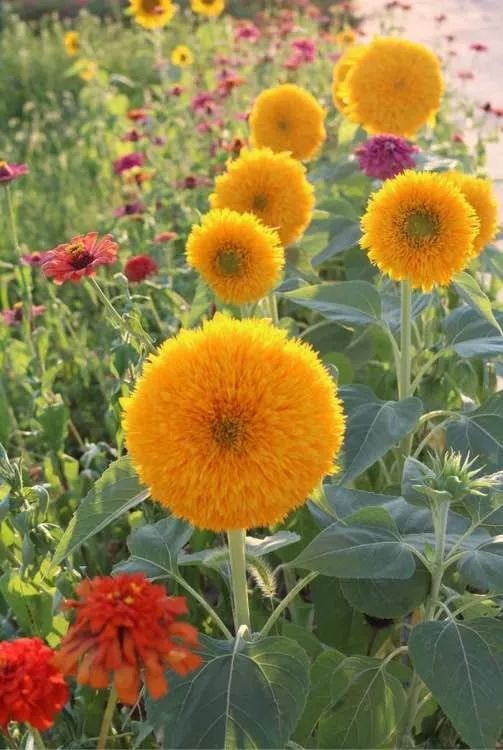
Some flower lovers do not have enough space at home, so they can grow dwarf sunflowers, which can bloom when they are 30 cm tall and are also very popular.
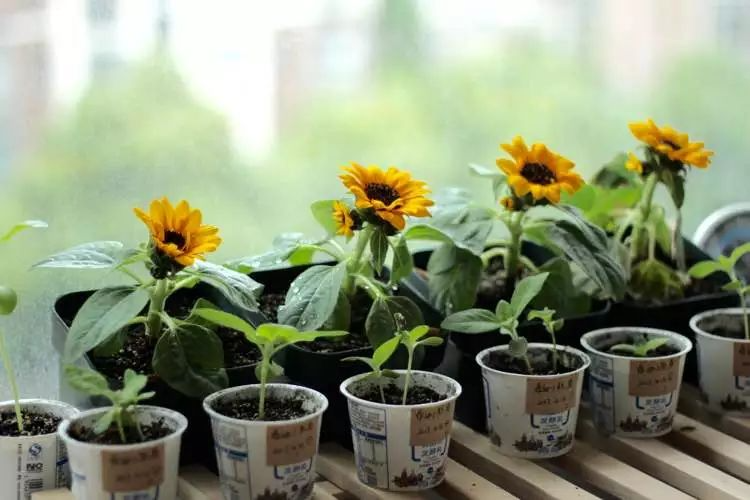
Maintenance focus:
Sunflowers can be grown from ordinary melon seeds, but the flowers are small and ugly. Normal ornamental sunflowers need to be sown with specific seeds. Bury the seeds in moist soil and they will germinate and grow. They will grow faster if they are exposed to more sunlight.
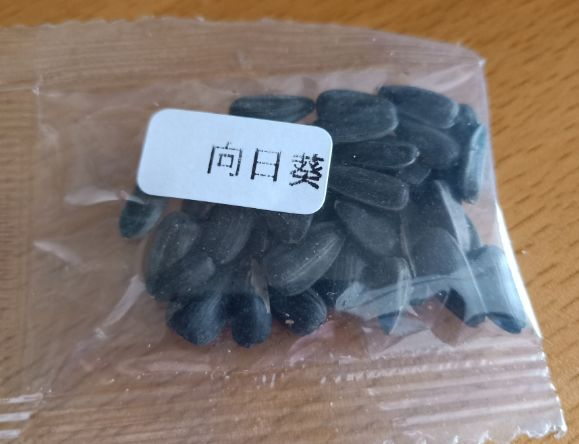
Extreme temperature: 40 degrees
Windmill jasmine is also called ivy vine. It is not afraid of heat or sun, and is also shade-tolerant. If you want to grow a climbing flower that grows fast and has few diseases and pests, this is your first choice. Its flowers smell better than perfume.
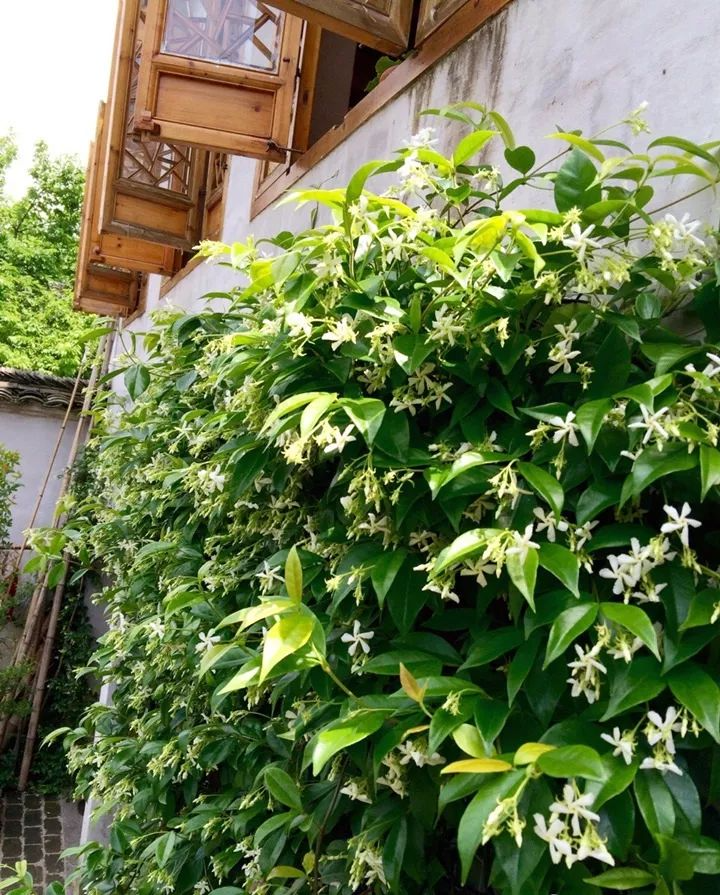
Image by: Nanping Shanju-Hongzi
Maintenance focus:
There are almost no problems to pay attention to when growing windmill jasmine. Just plant it in the ground and let it grow naturally. Remember to prune it after it blooms in summer. Don't let it grow too fast. If it is potted, it is best to add some fertilizer after it blooms. Compound fertilizer or slow-release fertilizer will do. It is not picky about food.
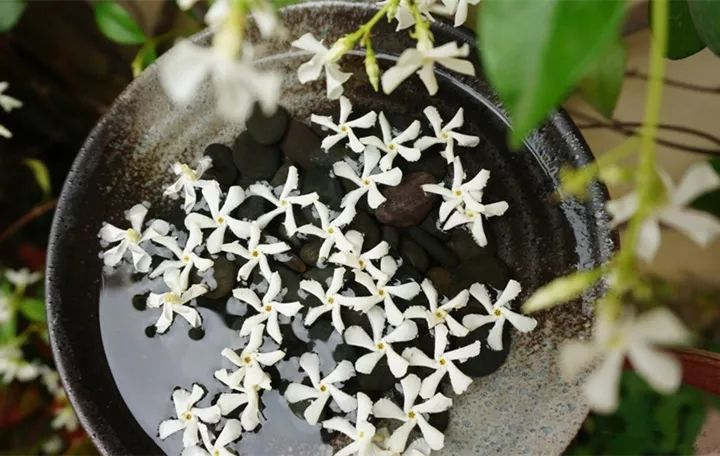
Image by: Xi Shi Chao Hua
Extreme temperature: 38 degrees
Bougainvillea is a common flower in the southern region. It is heat-resistant and sun-resistant, has a long flowering period and bright colors. It is also loved by flower lovers in the north. There is almost no problem in the summer, and it is okay in the winter if there is indoor heating. The most common rose-red bougainvillea can be planted in the ground or in areas without heating.
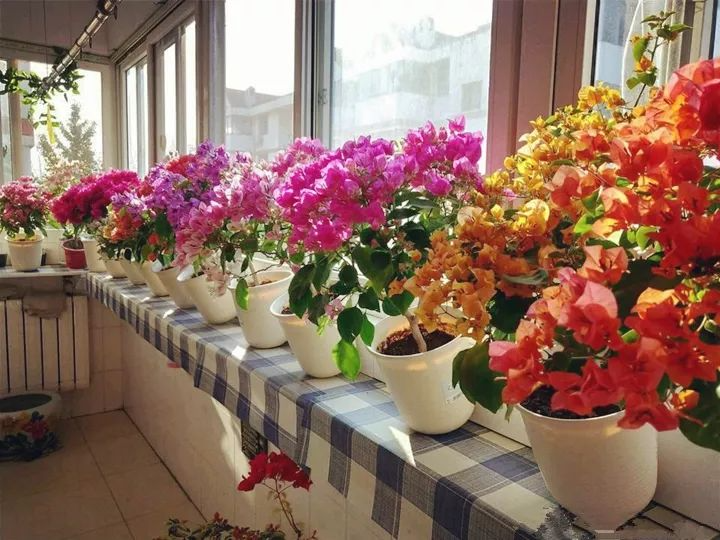
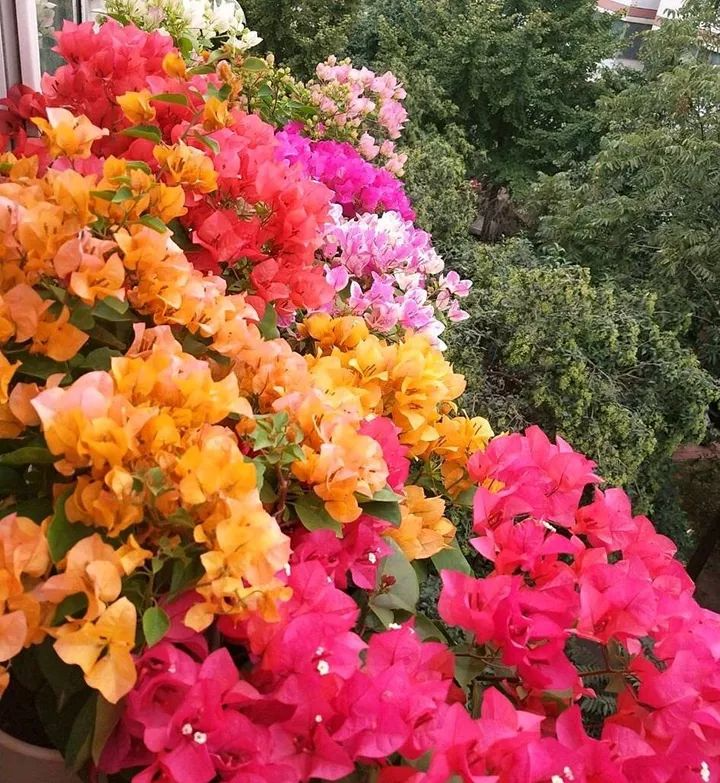
Maintenance focus:
Bougainvillea needs to be watered before it blooms. This does not mean watering it less often. Instead, you should let the bougainvillea become "thirsty" until its leaves become soft, then water it thoroughly with a large basin of water. Wait until the leaves become soft next time and water it thoroughly again... Repeat this for 20-30 days, and the bougainvillea will begin to bloom.
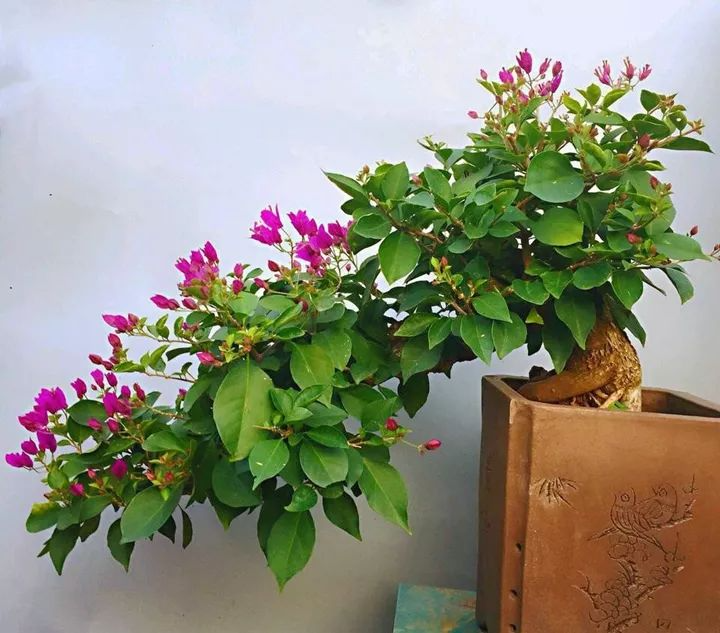
Extreme temperature: 38 degrees
Lantana is what we often call five-color plum. Each flower blooms at different times and in different colors, so there are several colors of flowers on each flower ball. Five-color plum not only has orange, rose red, purple red, but also white, golden yellow, and lavender.
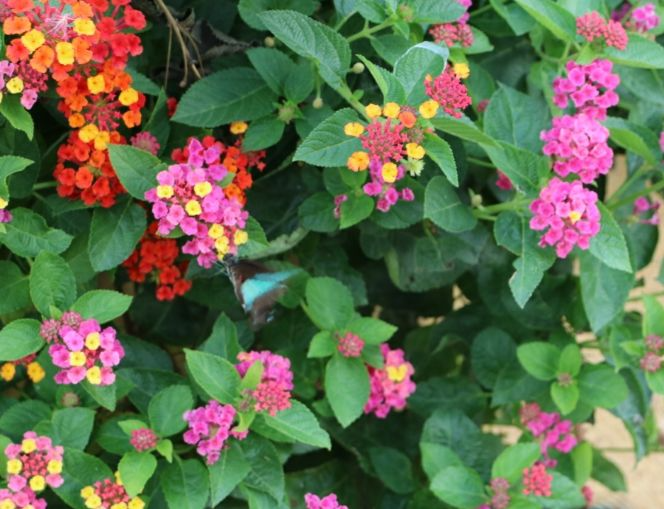
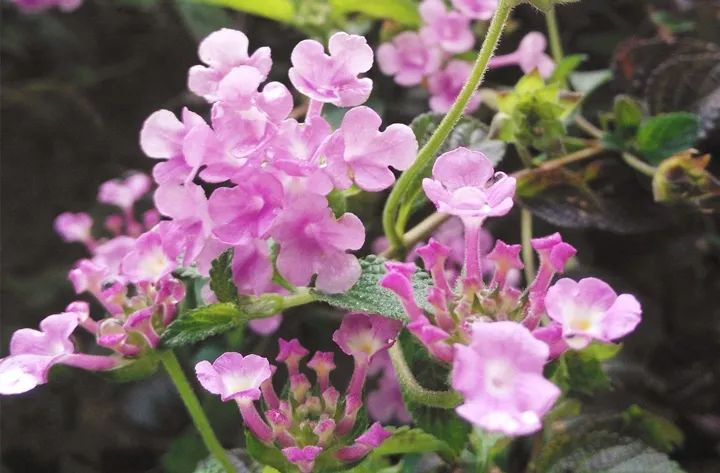

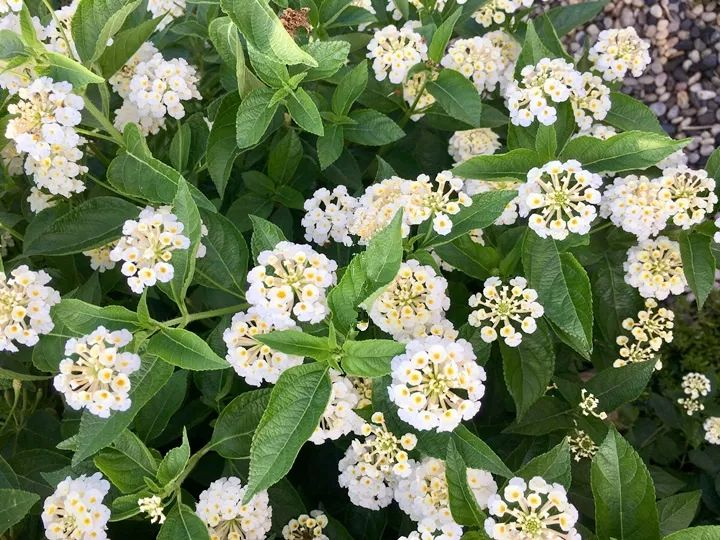
Maintenance focus:
The five-color plum is suitable for outdoor cultivation, and does not need shade even in the high temperatures of summer. The more it is exposed to the sun, the better it grows and the more flowers it blooms. The plant scent it emits can repel mosquitoes and flies, and it can protect itself very well, so there is almost no need to worry about raising it.
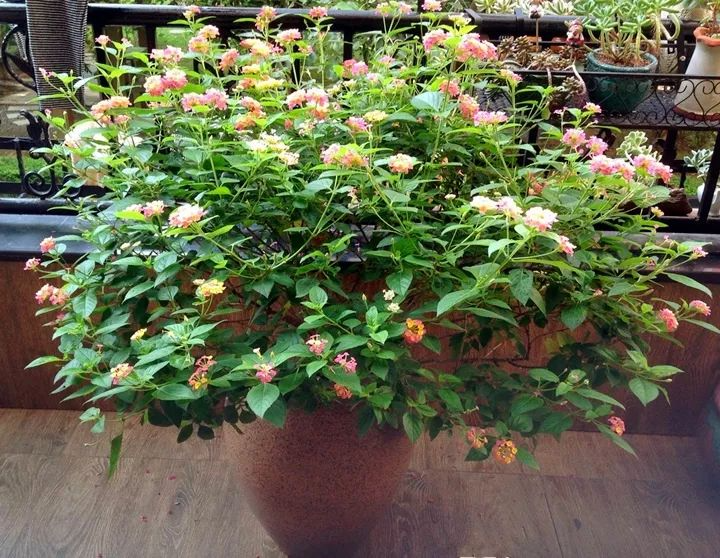
Image by: Huajiajie, the colorful world
Extreme temperature: 38 degrees
Desert rose is native to Africa. It is very heat-resistant and sun-resistant. It can bloom almost all year round in southern regions such as Taiwan, Hainan, Guangdong, and Fujian. The flowering period in other regions is from April to December, and it can also bloom if there is heating.
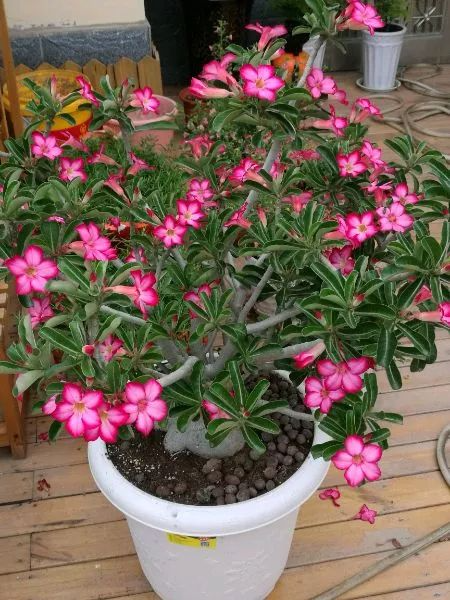
Image by: dongyq4066
Maintenance focus:
To grow Desert Rose, you need more sun and enough temperature for it to bloom. The second thing is to take care of its "belly". Desert Rose is drought-tolerant but afraid of waterlogging. Don't water it too often, as it will easily rot the roots and belly. Touch its belly close to the root system, and if it is a little soft, you can water it.
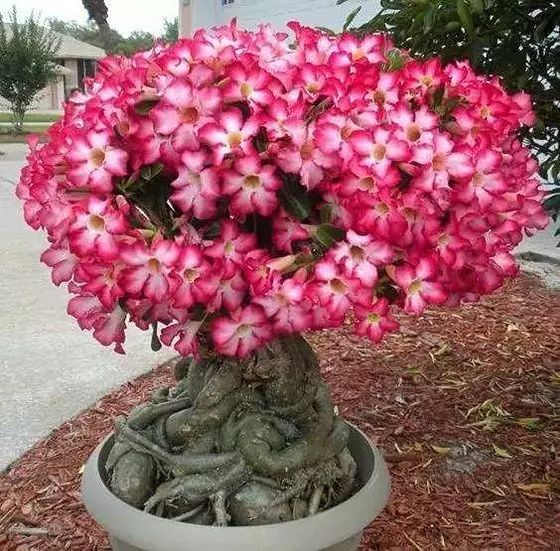
Extreme temperature: 37 degrees
Dianthus is very heat-resistant and suitable for planting in places exposed to the sun. It blooms more than once, from April to November. Some dianthus with strong cold resistance will also bloom in winter.
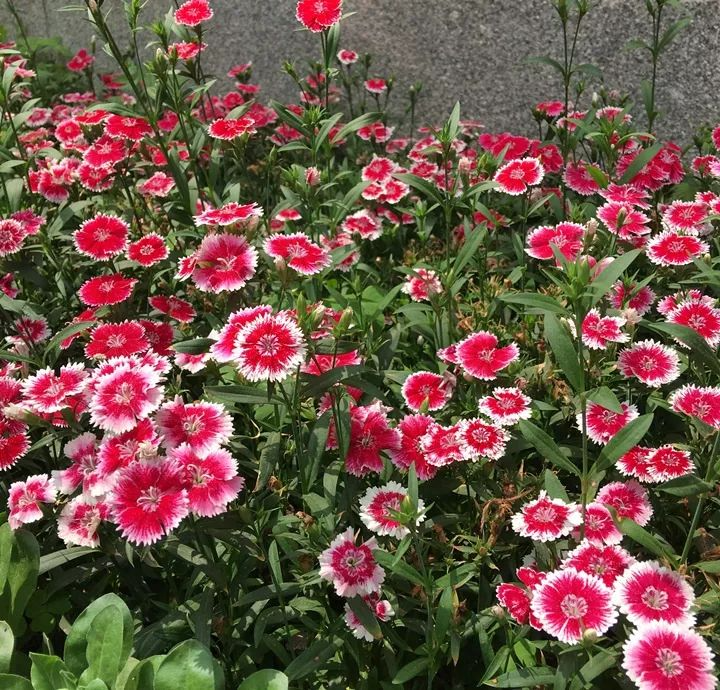
Most common dianthus have single petals, but there are also double-petaled dianthus. Carnation is also a kind of dianthus. You can use the fresh carnations you buy to plant a potted plant.
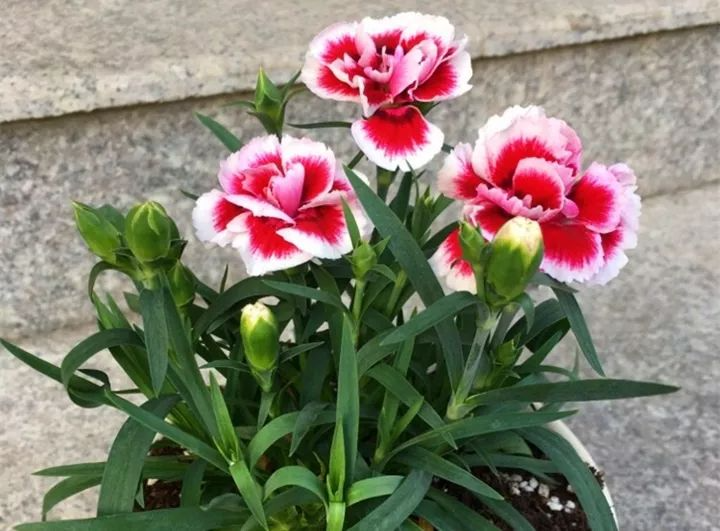
Maintenance focus:
Dianthus does not require much soil. Ordinary soil mixed with some sand is better. After flowering, the water demand increases, so you can water it more appropriately. After flowering, it will produce seeds. If you want it to bloom again quickly, you need to quickly cut off the remaining flowers to retain nutrients.
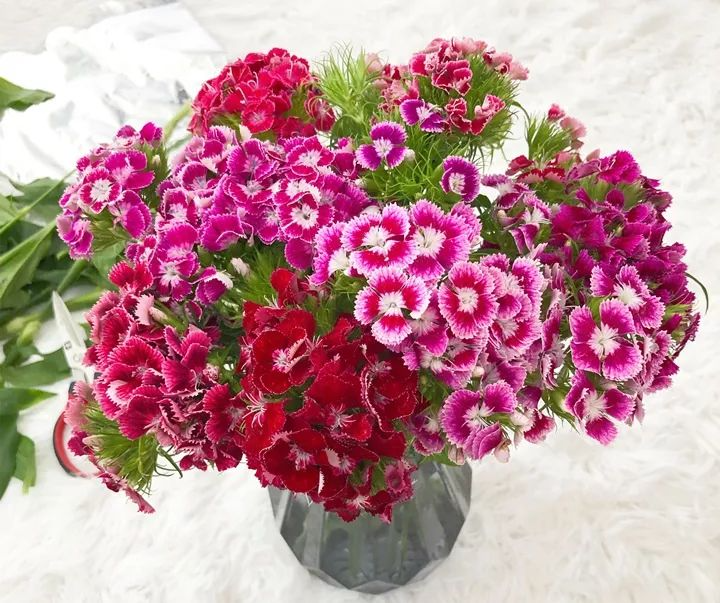
Extreme temperature: 37 degrees
Morning glory starts to bloom in July, the hottest month, and continues until autumn. When I was a child, the fields were full of them. In some places, it is called five-pointed star flower.
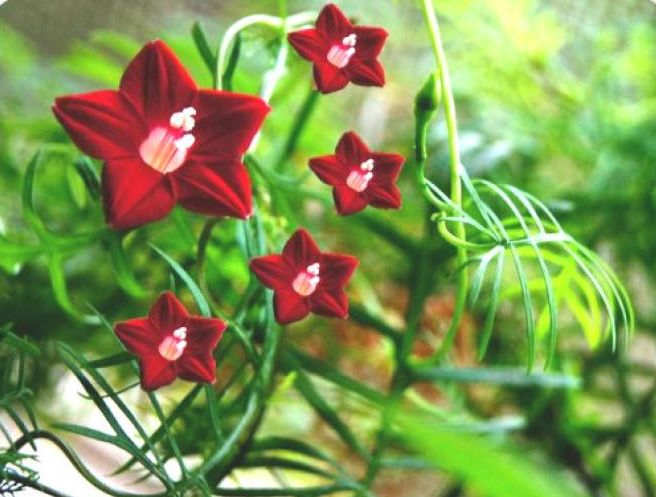
Maintenance focus:
Morning radish can be propagated by cuttings. Just pick a small branch and stick it in the sand and it will take root. However, the branches of morning radish are relatively soft, so you need to find a support in advance for it to climb.
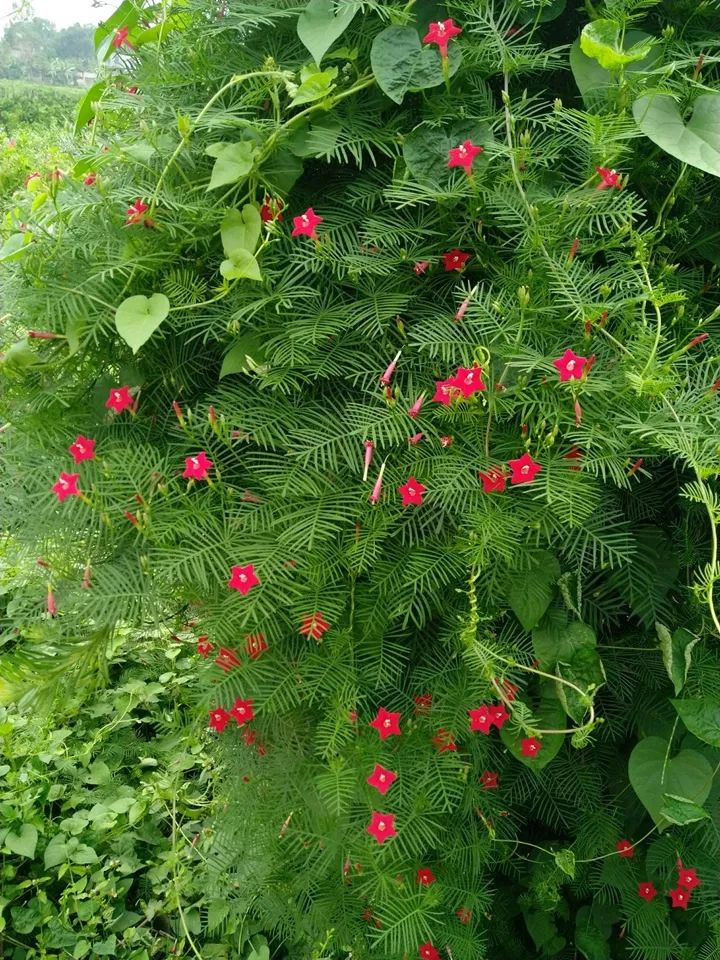
Extreme temperature: 37 degrees
Euphorbia milii is native to Africa. It is a very easy-to-grow tropical flower that can bloom in all seasons. Its colors are bright, including red, yellow, white, multicolored, and pink .
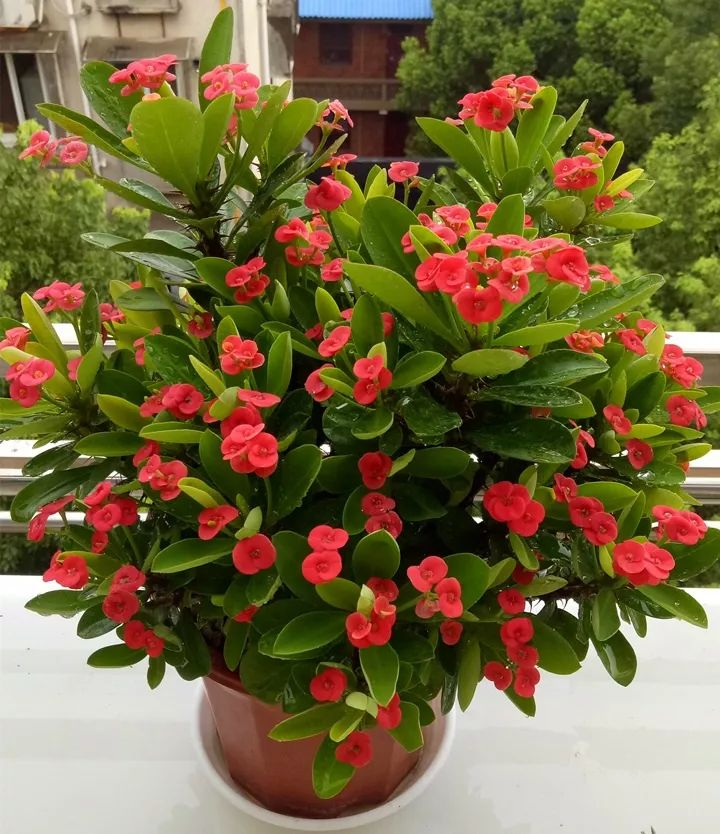
Image by: yxf
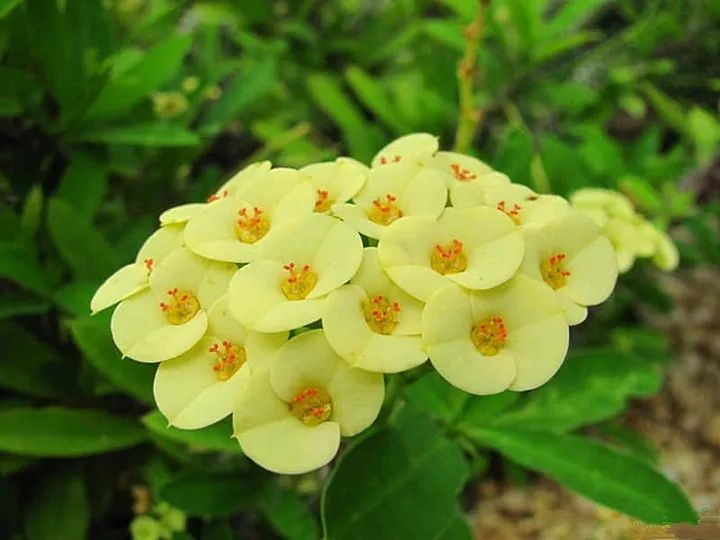
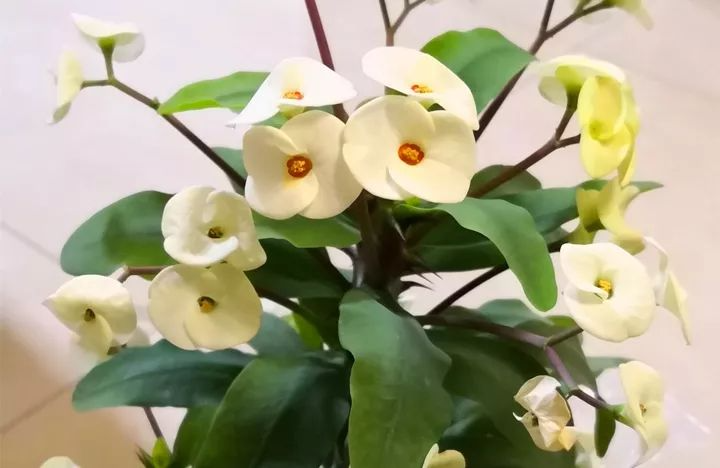
Image by workmany
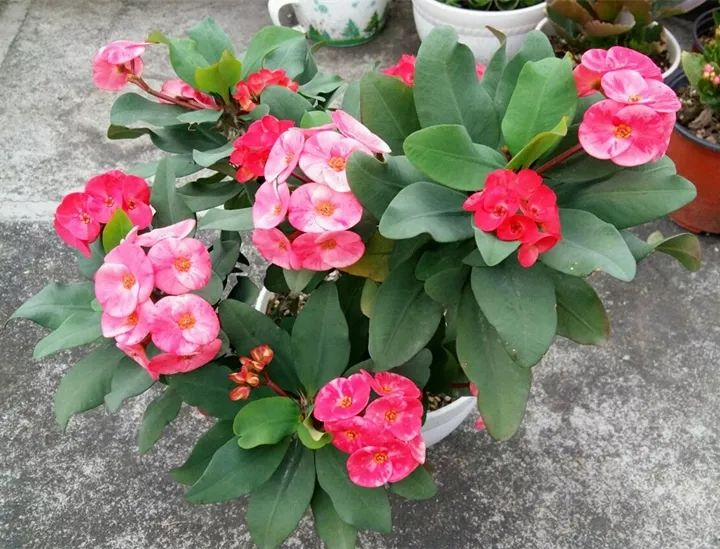
Image by: Looking forward to the flowers blooming
Maintenance focus:
Euphorbia milii likes acidic soil and likes water during the flowering period but is afraid of waterlogging. That is to say, you can water it frequently, but you must first ensure that the soil is breathable and permeable. You can add some sand to the potting soil or put expanded clay at the bottom of the pot, so that you don’t have to worry about rotting the roots when watering.
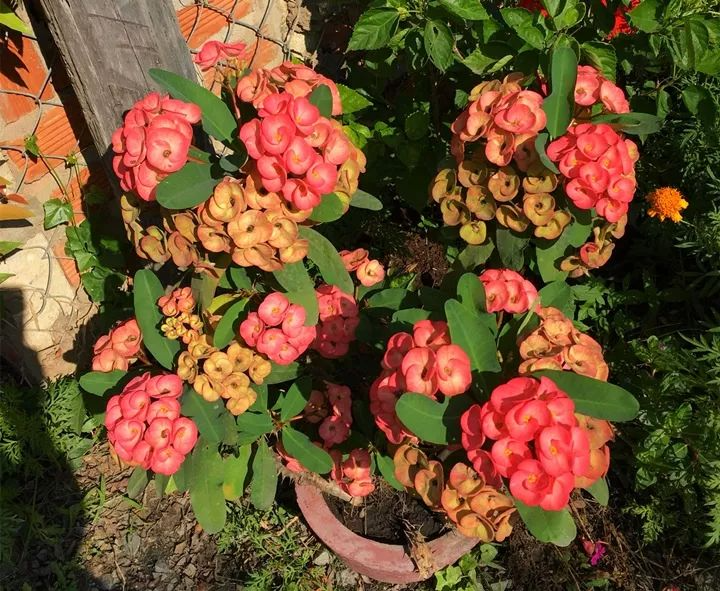
Image by jeanne0319
Extreme temperature: 37 degrees
The bright red Ixora is more common in the south, especially in tropical areas. It is the most eye-catching flower in summer, and its flowers look like hydrangeas. If your home is very hot in summer, you can grow it in a pot.
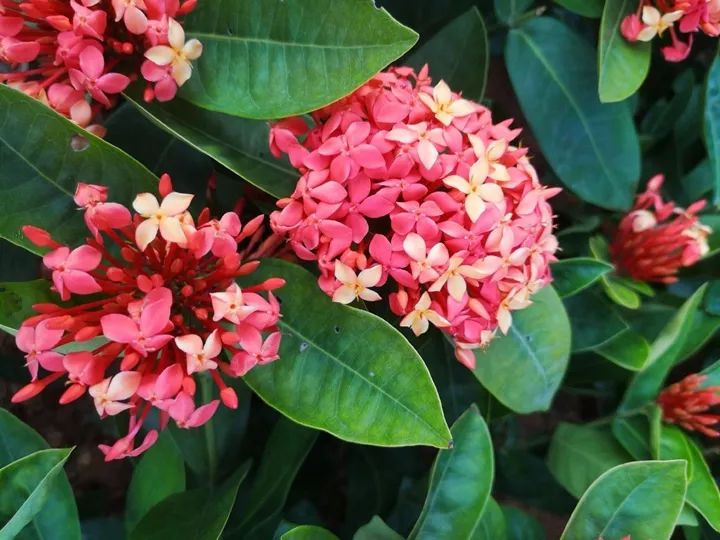
Image by: Wei Lanyuan
Maintenance focus:
The Ixora can be propagated by cuttings. In spring and summer, insert the branches into moist sandy soil. It will take root and sprout in half a month. There is almost no problem growing the Ixora in the south. In the north, you must pay attention to keeping it warm in winter. It can survive the winter if it is placed indoors at a temperature above 5 degrees.
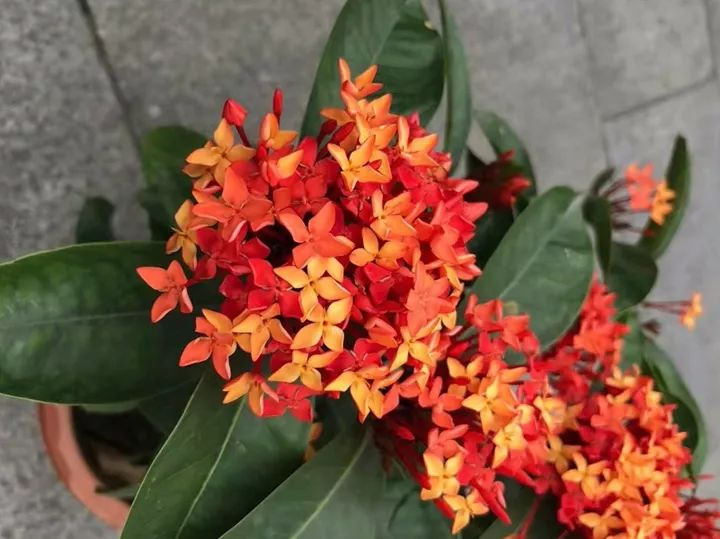
Image by: Bighead Shrimp_277
Extreme temperature: 37 degrees
Morning glory begins to grow in spring and summer, blooms in the summer mornings, and closes at night. Some flower lovers confuse it with petunias, but in fact, morning glory is more sun- and heat-resistant than petunias, and can also climb vines.
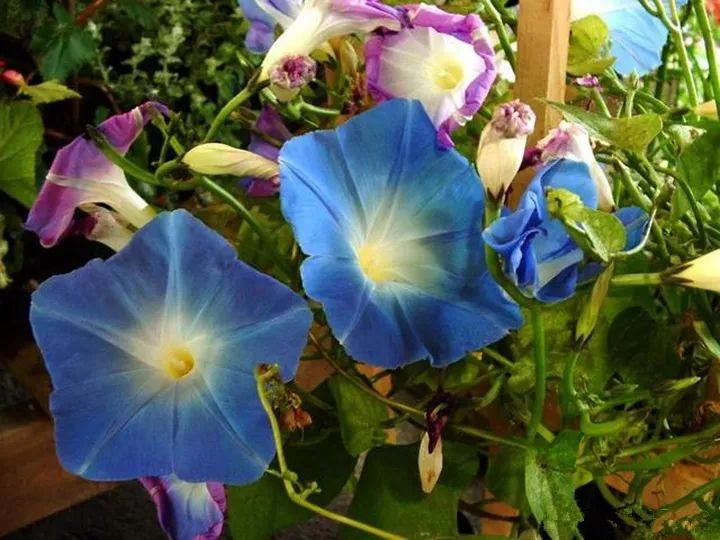
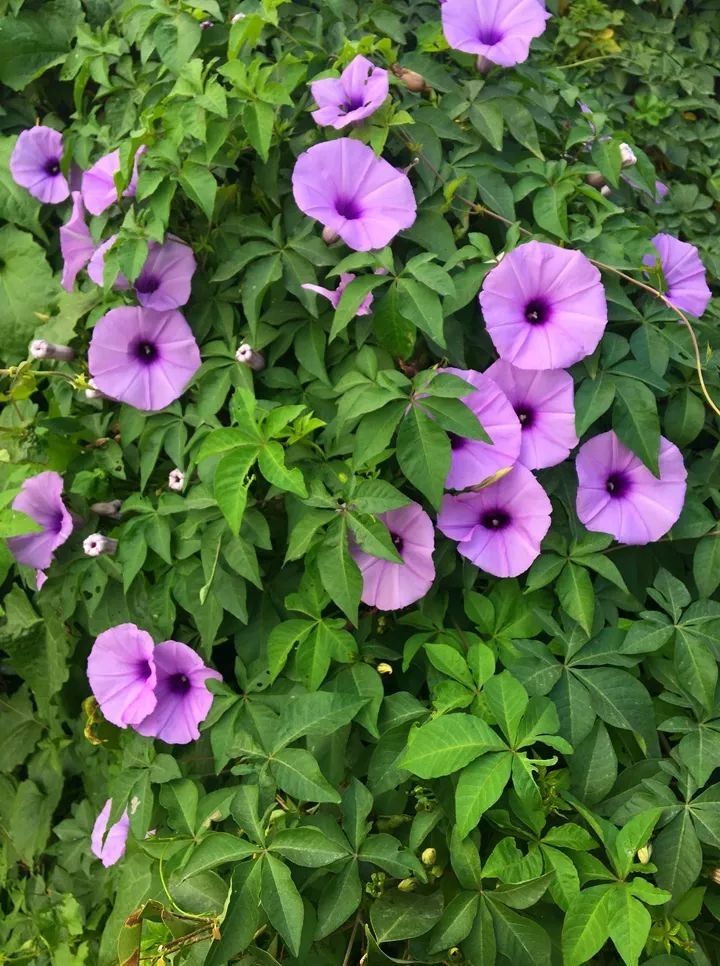
Maintenance focus:
Morning glories can be sown in April and May. You can also pick branches of some wild morning glories and use them for cuttings. Morning glories love light and can be placed in the sunniest place in summer to provide shade and make your home cooler.

Image by: Lin Xiaobai
Extreme temperature: 37 degrees
The flowering period of lisianthus starts in summer. If you plant it in the autumn of the first year, it will bloom in the spring and summer of the second year, and it can bloom until November. There are many flower buds. As a common fresh cut flower, it costs 5-20 yuan per branch in the flower shop. It is much more cost-effective to grow it yourself.
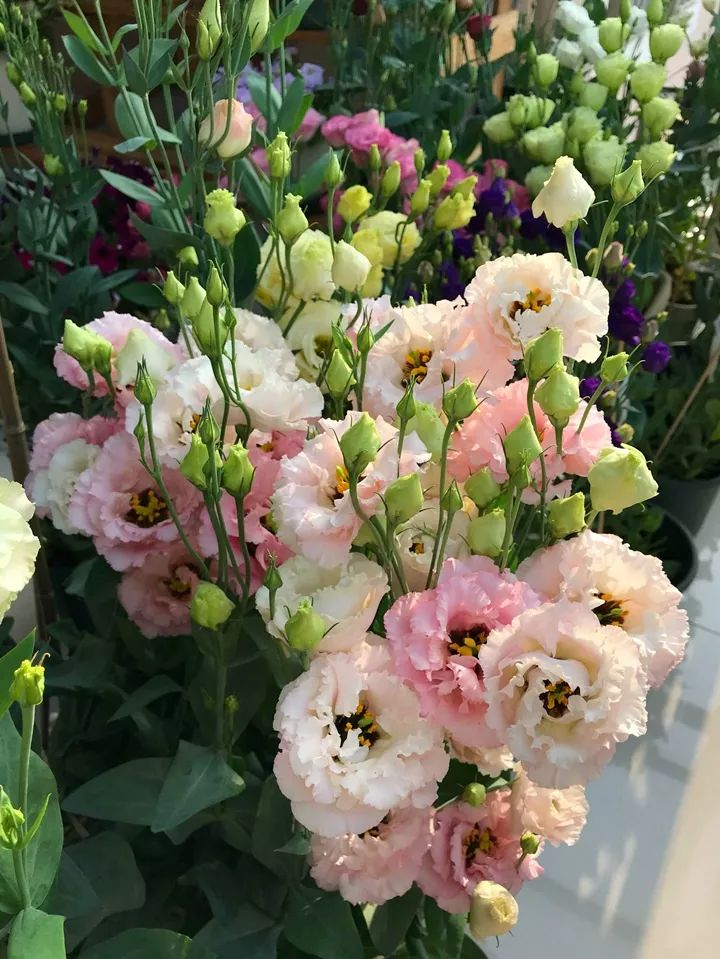
Image by: Peanut Snake
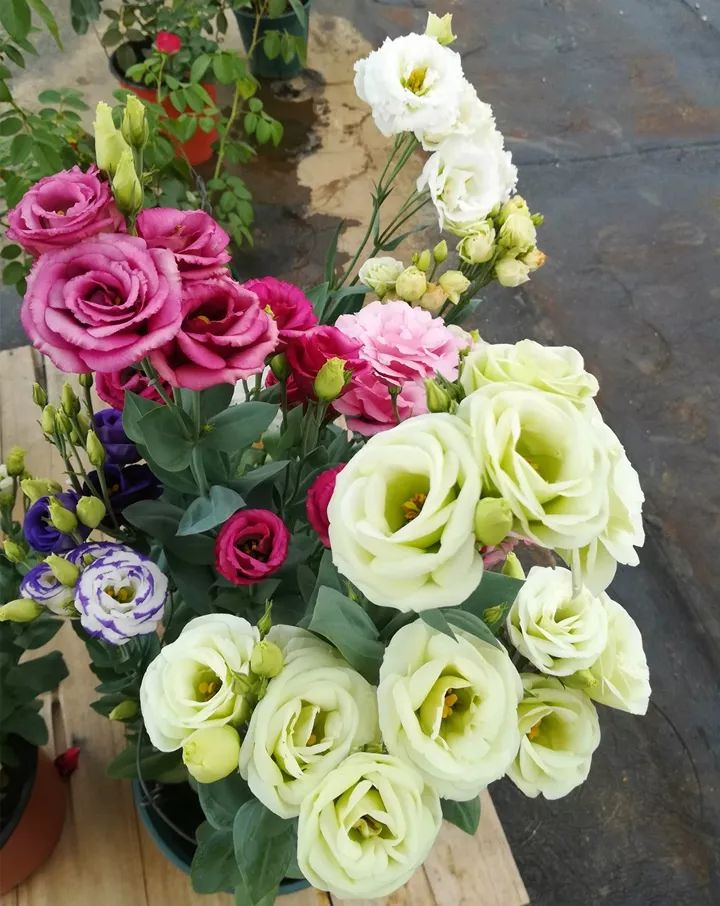
Image by: Flowers bloom all the way
Maintenance focus:
Lisianthus can be sown or propagated by cuttings. Fresh flowers bought from the flower shop can also be cut into small pieces and inserted into the soil. Keep them moist and warm for about 10 days for them to take root. It is suitable for planting in breathable acidic soil. When the seedlings grow to 10-15 cm, they can be topped to promote branching.
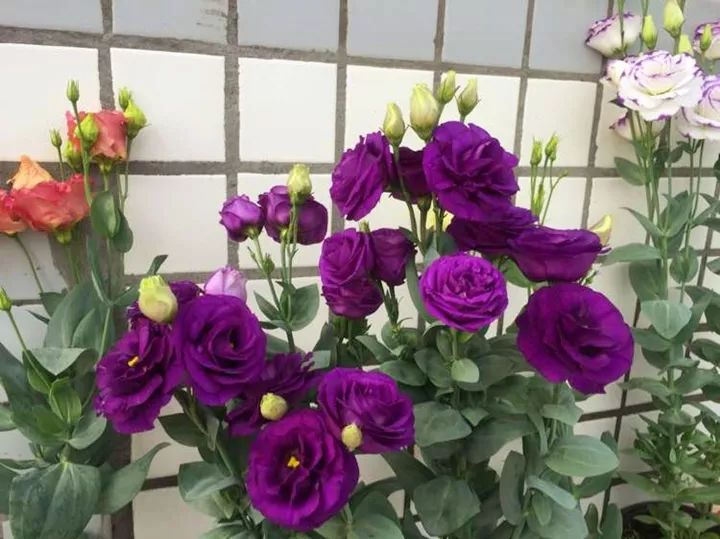
Image by: SpongeBob Garden
Extreme temperature: 37 degrees
The fragrant vine is also called the double happiness vine. It grows very fast and blooms a lot. In areas where the temperature is above 10 degrees in winter, it can bloom almost all year round. It has a strong fragrance and is very popular among flower lovers.
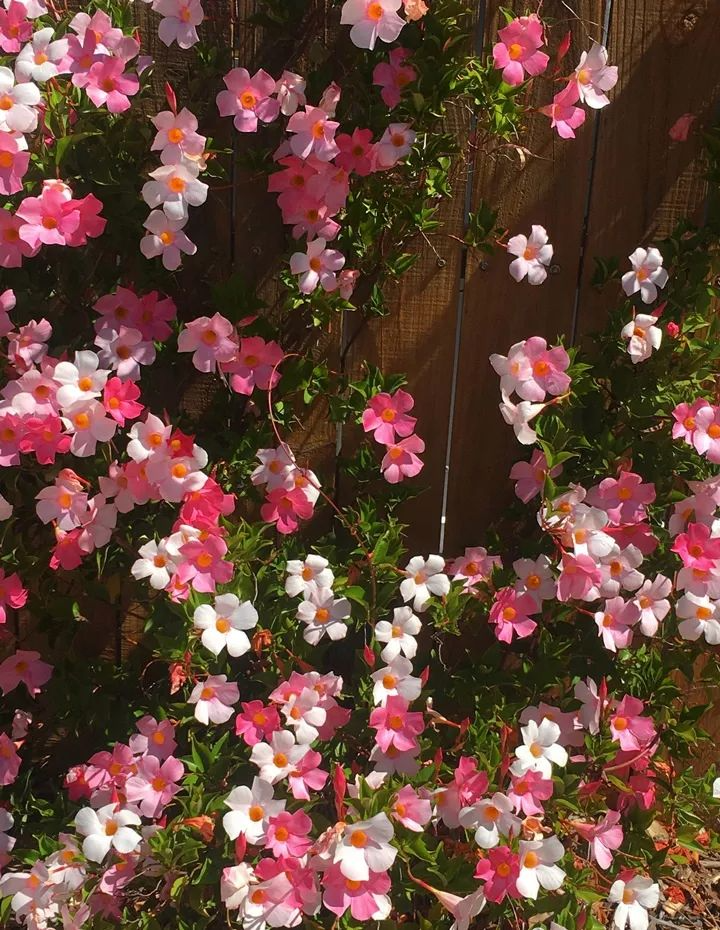
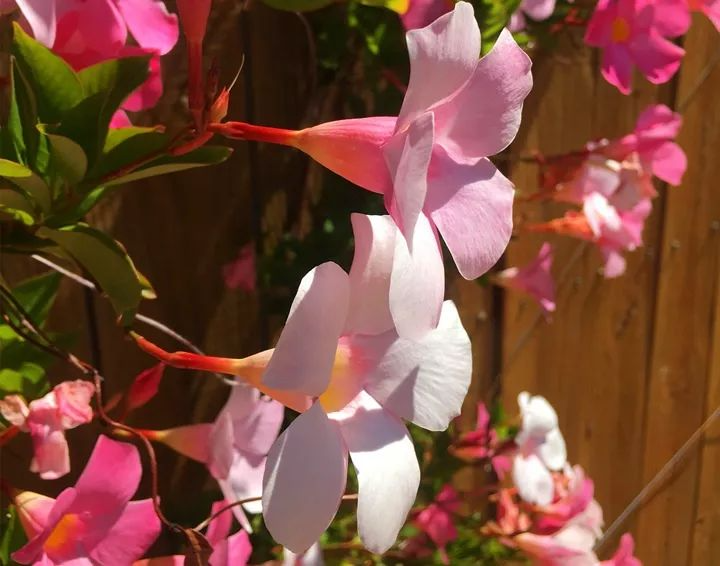
Maintenance focus:
The fragrant vine is not afraid of heat, but it is afraid of stuffiness. It is best to keep it in a place with good air circulation. Water it less on rainy days to avoid damp soil accumulation, root rot, and yellow leaves. After each bloom, you can water it with Huaduoduo No. 2 to supplement nutrients, so that it will bloom better the second time.
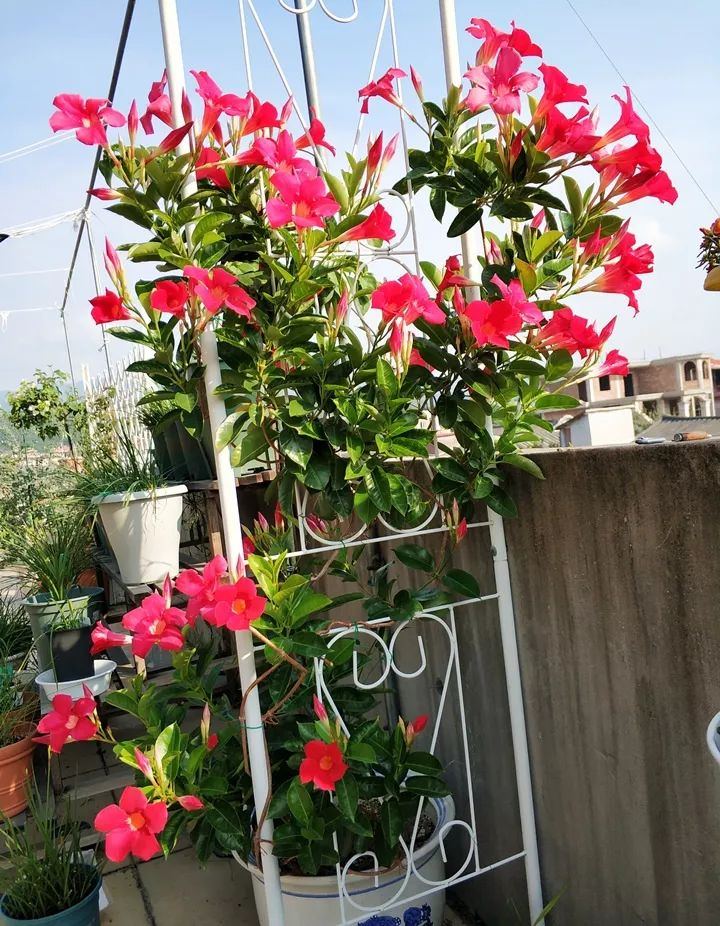
Image by: Mei C Garden
Extreme temperature: 38 degrees
Hollyhocks bloom higher and higher, and are generally common on roadsides or in front of and behind houses. They can also be grown on indoor balconies. Flower lovers in the north don't have to worry about wintering because they are not only heat-resistant but also cold-resistant. If planted outdoors, they will sprout and bloom on their own in the second year.
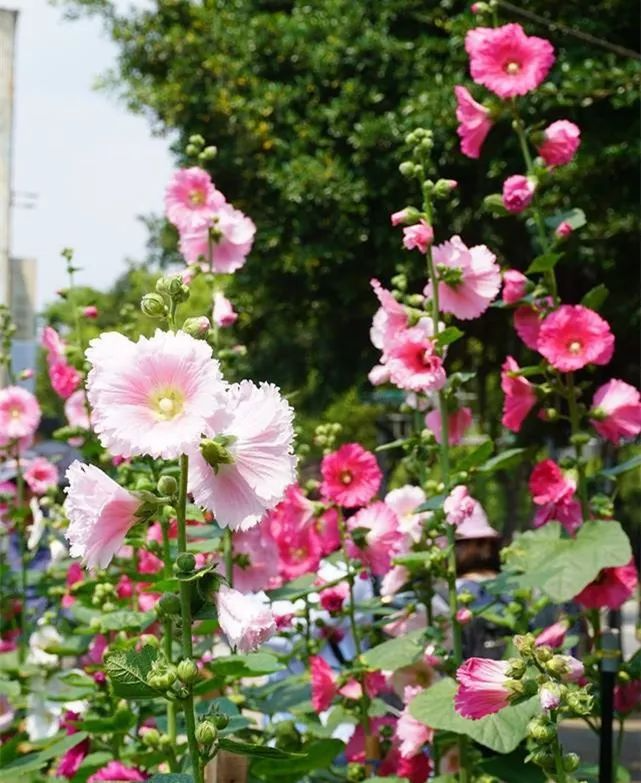
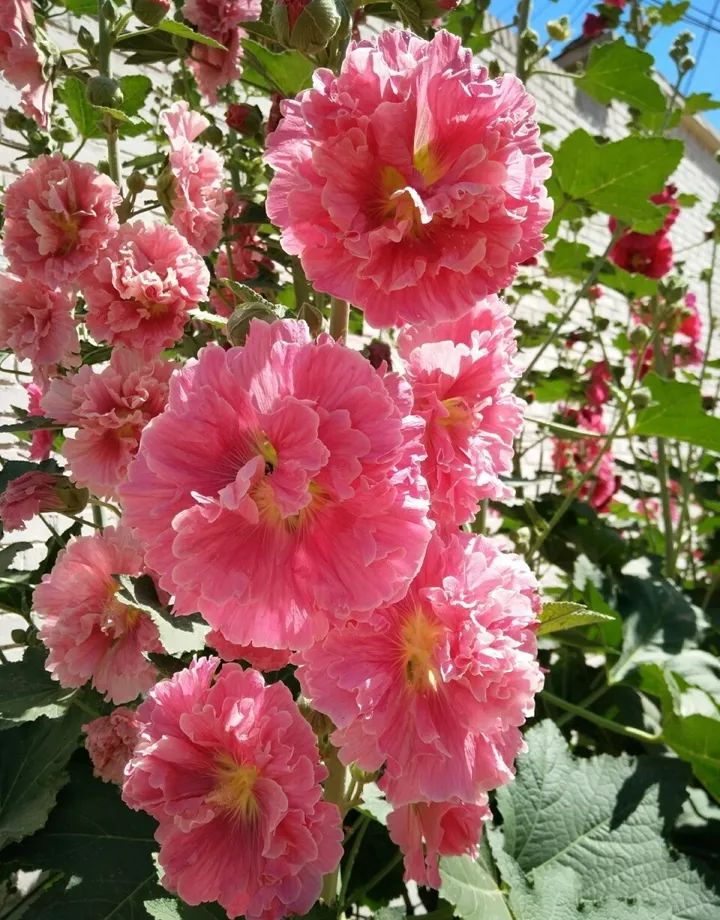
Maintenance focus:
Hollyhock likes acidic sandy soil. It can be planted in sandy soil mixed with leaf mold or coconut coir soil. If grown outdoors, it basically depends on the weather. If planted in a pot, it needs to be watered once a day in summer because it has many flower buds and requires a lot of water.
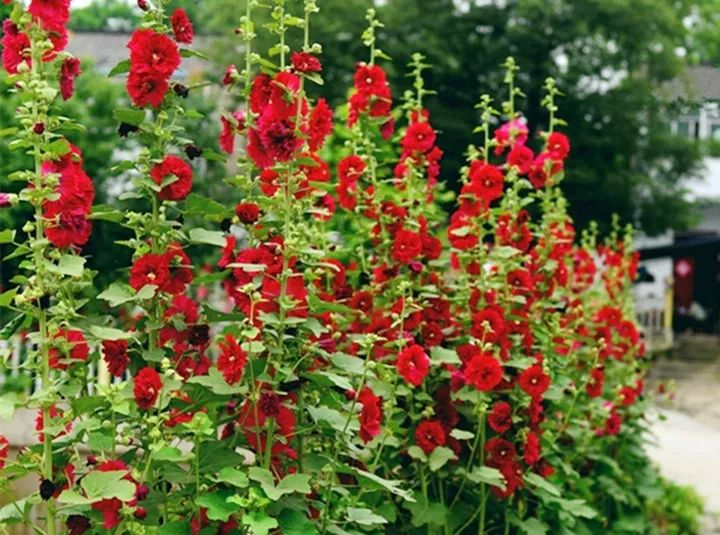
Extreme temperature: 40 degrees
Gloriosa lily is native to Yunnan, Hainan, Taiwan and other places. It is very heat-resistant and blooms during the hottest period of July and August. Its petals look like fiery red fireworks, which are very festive and passionate. It is a commonly used material for artistic flower arrangement.
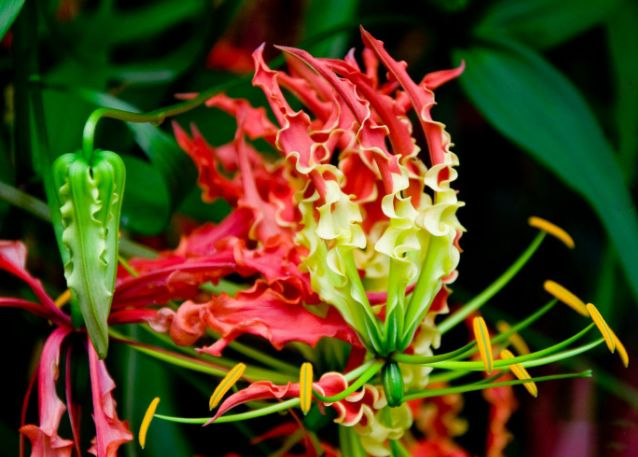
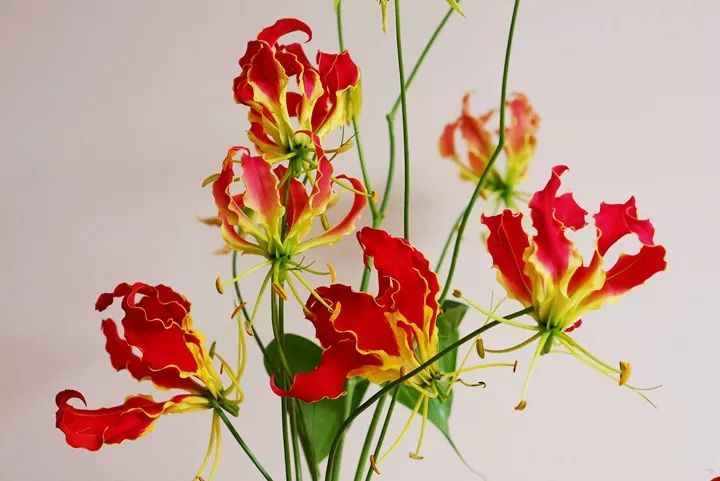
Maintenance focus:
The rhizome of Gloriosa lily is horizontal. When planting, do not plant it vertically. Bury it horizontally in the soil, about 5-8 cm deep. After sprouting, expose it to more sunlight to avoid excessive growth. Do not trim it during the growth process. You can water it with some nutrient solution to promote flowering.
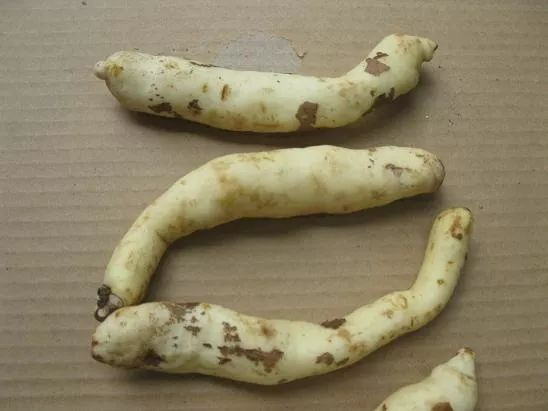
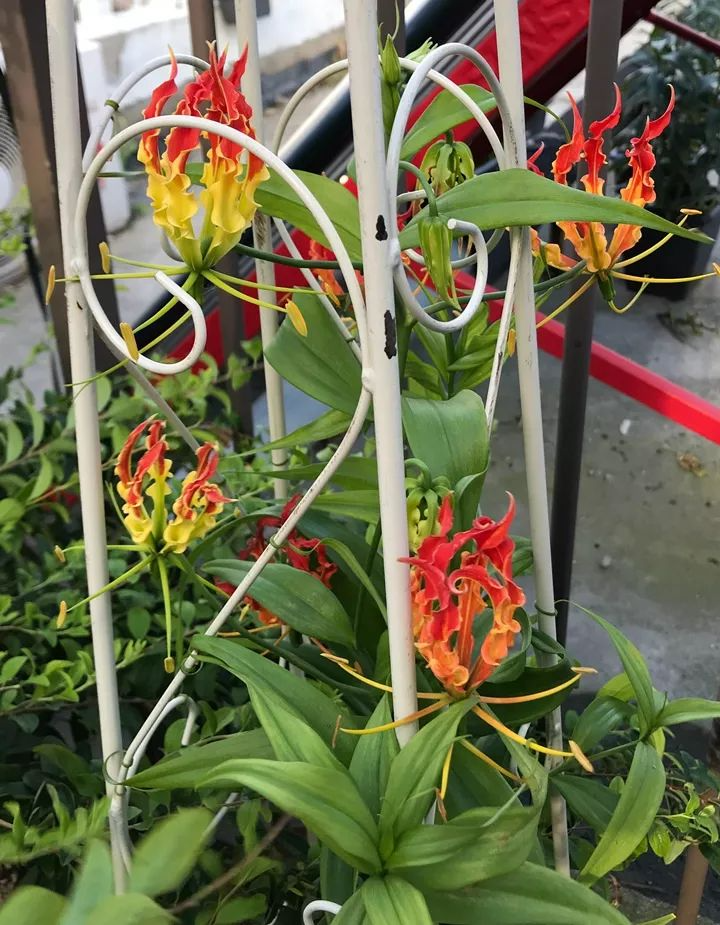
Extreme temperature: 38 degrees
Golden dew flower, also known as false forsythia, is a common flower in the south. It can bloom all year round. In the north, it needs to keep warm in winter and blooms more in summer and autumn.
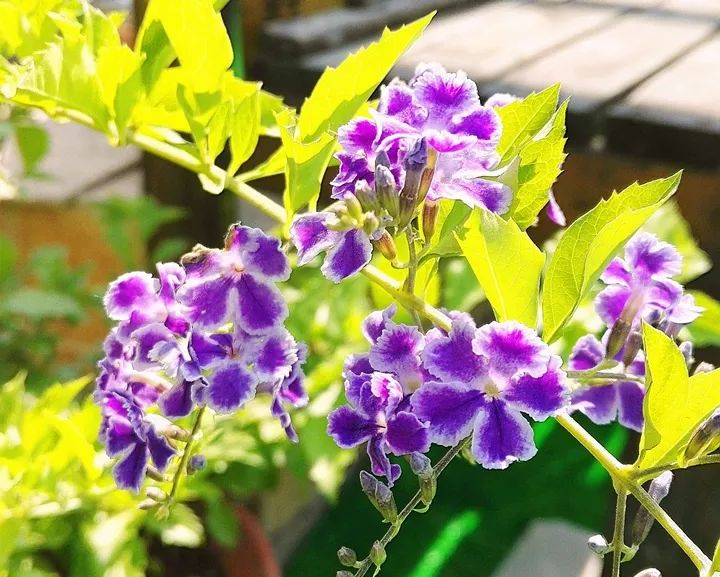
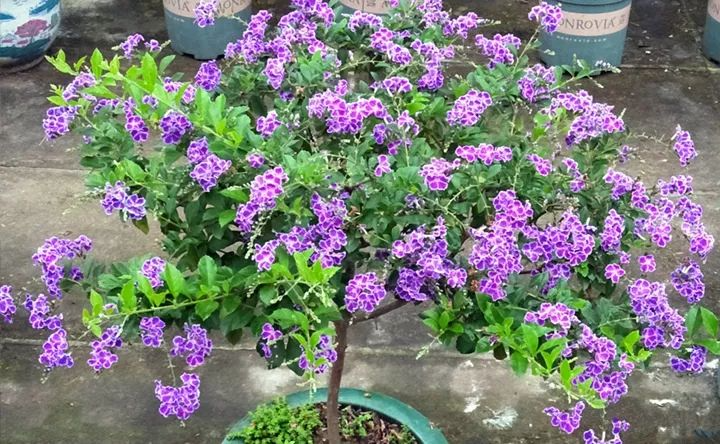
Image by: Splendid Flower Roof
Maintenance focus:
Golden dew flowers like to bask in the sun and grow fast in spring and summer. They need more sun to successfully breed flower buds. After the flower buds appear, you must remember to moisturize them. In addition to spraying water every morning and evening, you can place the golden dew flowers among other flowers, and the humidity will be more appropriate.
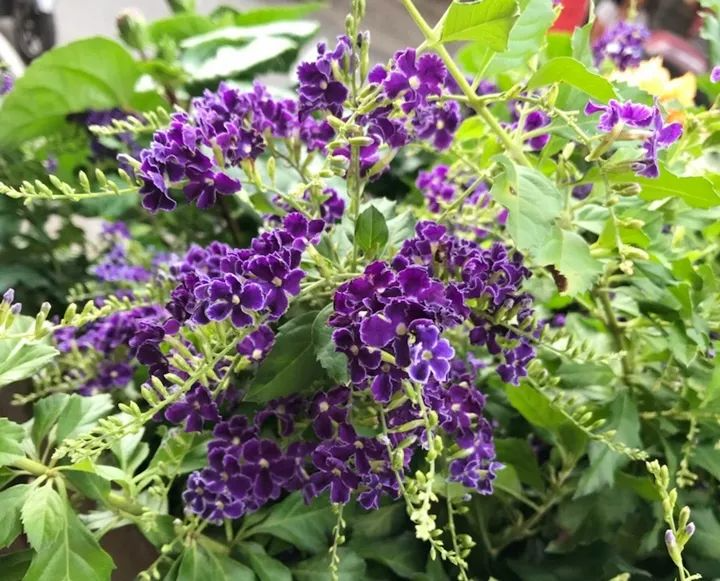
Extreme temperature: 36 degrees
Dahlias have bright colors and large flowers, and it is very rewarding to grow them. Their flowering period is from June to October, and as long as the weather is not extremely hot (you can provide shade to avoid sunburn), there is no problem growing them.
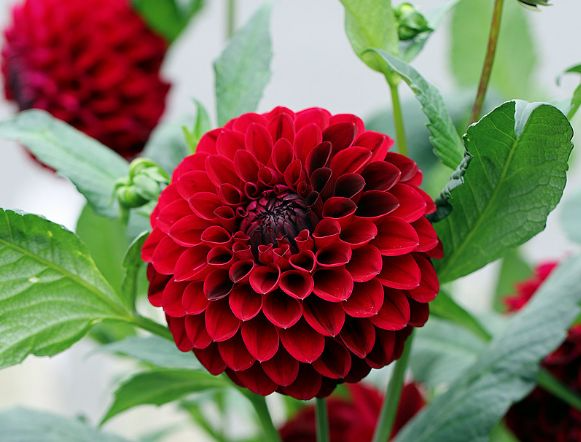
Image by: Pink Iris
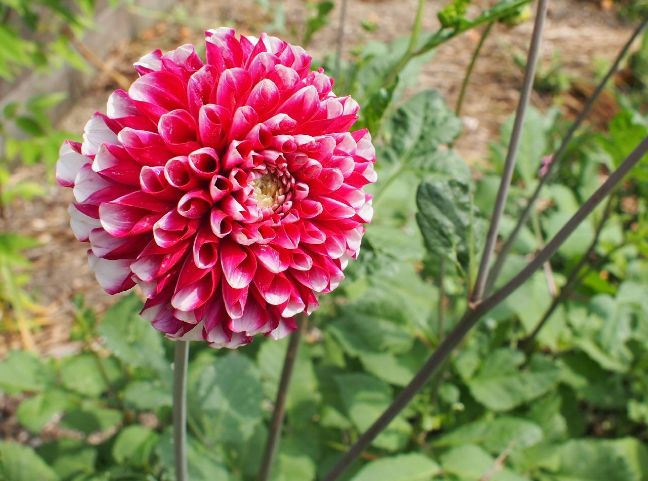
Maintenance focus:
The rhizomes of dahlias are like sweet potatoes. You continue to grow them after they bloom every year. In November or December, when the branches and leaves begin to wither, you can cut them off, take out the rhizomes from the soil, dry them slightly, and then bury them in dry sand for preservation. You can plant them again in the spring.

Extreme temperature: 35 degrees
Summer chrysanthemum is a variety of chrysanthemum that can bloom in summer. Most of them are small multi-petal chrysanthemums with many colors and many flowers. If they are well cared for and fed with enough nutrition, they can bloom twice a year. They are also a blooming machine in summer.
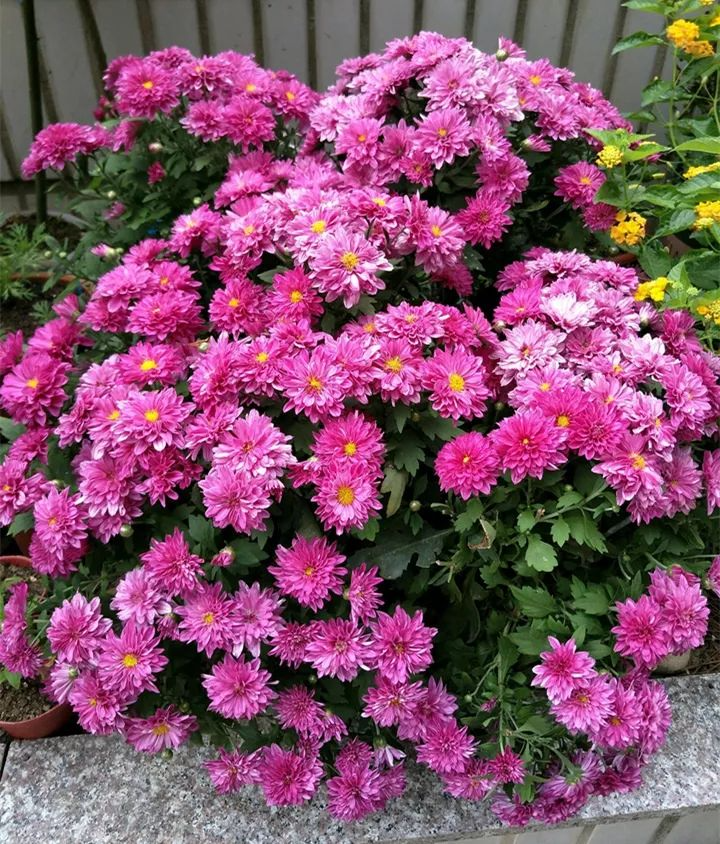
Image by: Baozi Mama
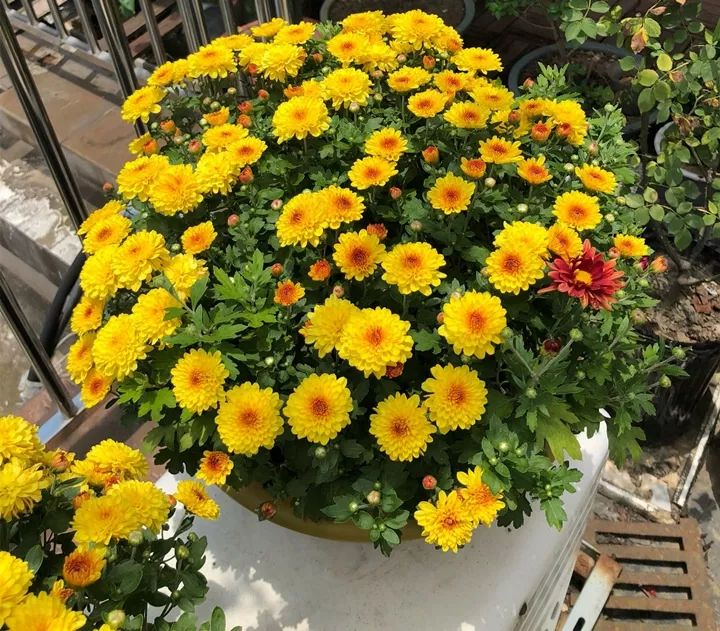
Image by: White Rose 20081
Maintenance focus:
Summer chrysanthemums have a large number of flowers and consume a lot of nutrients. When the flowers are about to fade, cut them off quickly, cutting off about 5 cm of the flowers and stems. After one week of cutting, water them with some nutrient solution (Huaduoduo No. 2), and they will bloom again after 2 months.
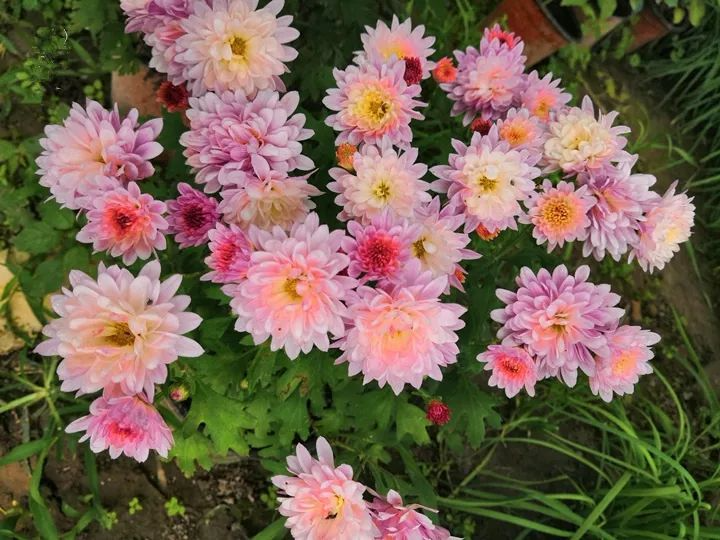
Image by: fly night slightly cool ok
Extreme temperature: 35 degrees
The butterfly flower has become very popular recently. Its flowers are very dreamy and beautiful, and it also has a sweet fragrance that attracts butterflies and bees. Its flowering period is from May to October. The spring in the south is warm earlier, so it will bloom earlier.
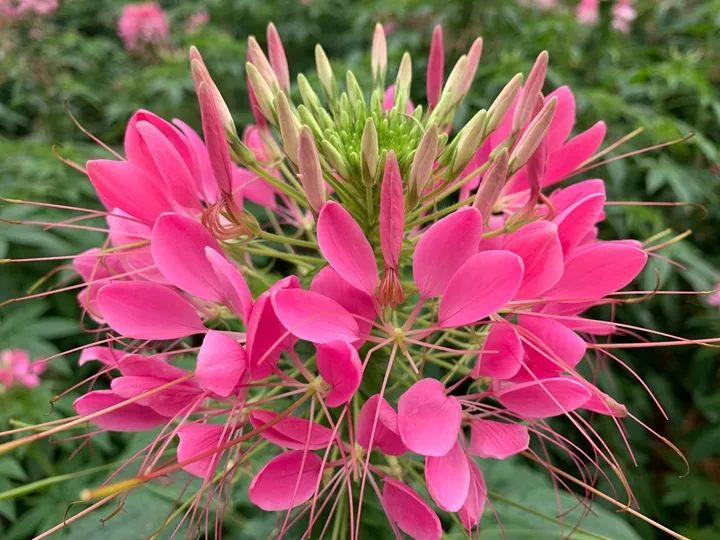
Image by: Sunflower556
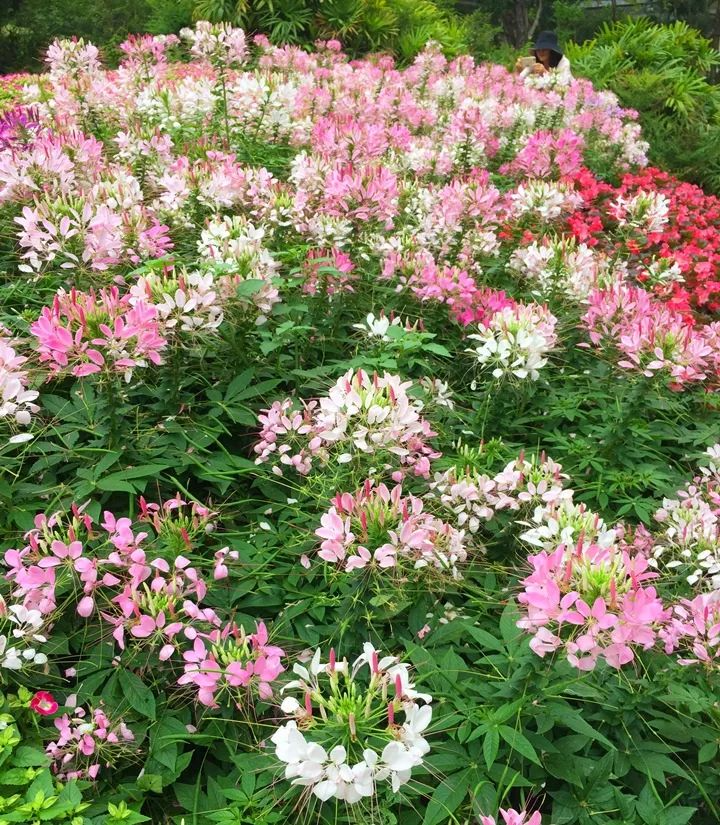
Maintenance focus:
Buddleja is suitable for planting in the yard. If you use a potted plant, choose a deeper pot and put some large expanded clay or gravel at the bottom of the pot for drainage and ventilation. Expose it to the sun for more than 3-4 hours a day so that the flowers will be larger and more fragrant. It will produce seeds after the flowering period, so remember to collect them.
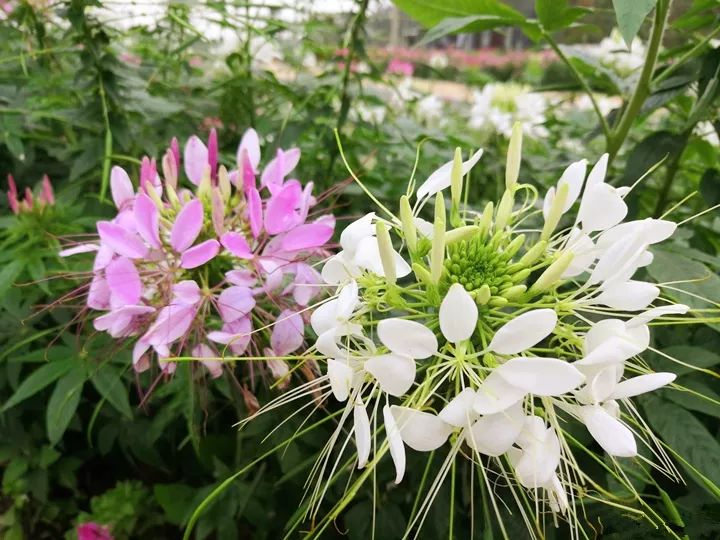
Image by: Xiao Bing Ling Hua
Extreme temperature: 35 degrees
The flowers of bicolor jasmine are blue-purple when they first open, and then slowly turn white. The flower buds on the same bicolor jasmine plant bloom in different orders, so there are several colors such as white, light purple, and dark purple.
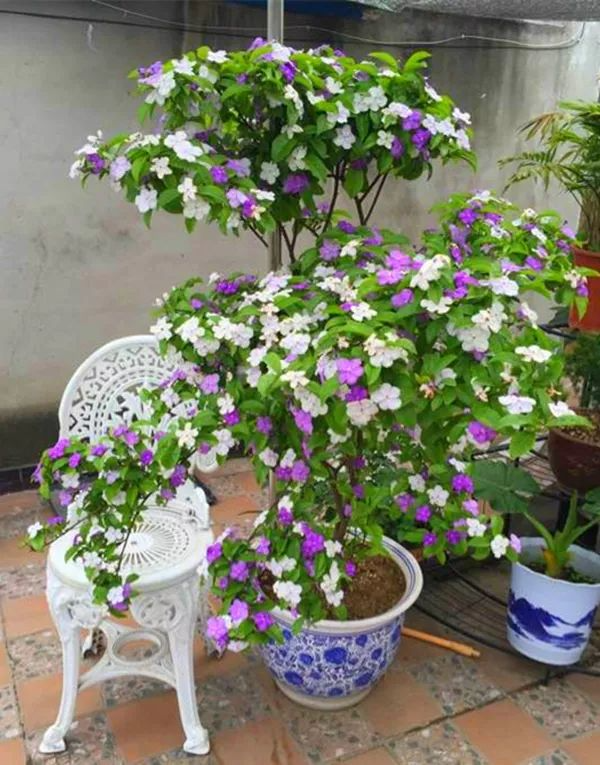
Image by: Riverside Park
Maintenance focus:
Although bicolor jasmine is not afraid of heat, it is a little afraid of the sun. In extreme summer sun exposure, it is best to place it in a semi-shaded position, or put a layer of shade cloth on it. It needs a lot of water when it blooms, and it needs to be watered every 1-2 days.
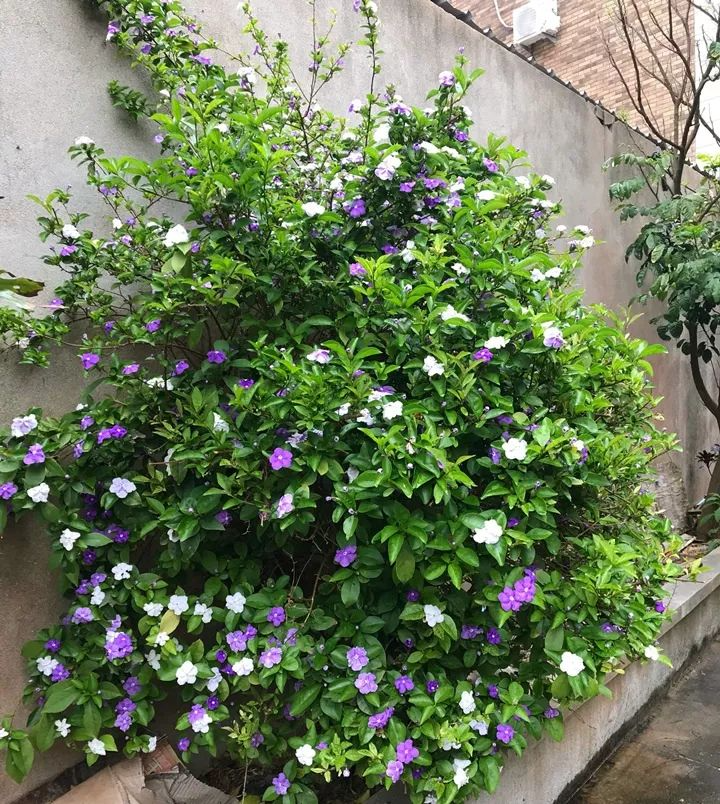
Extreme temperature: 35 degrees
Passion fruit seeds can be sown, and the vines grown can not only bloom but also bear fruit. Of course, the summer in the north is short, so it is okay to grow it as a flower, but the results may not be good. The high temperatures in the south last for a long time, so the results will be much smoother.
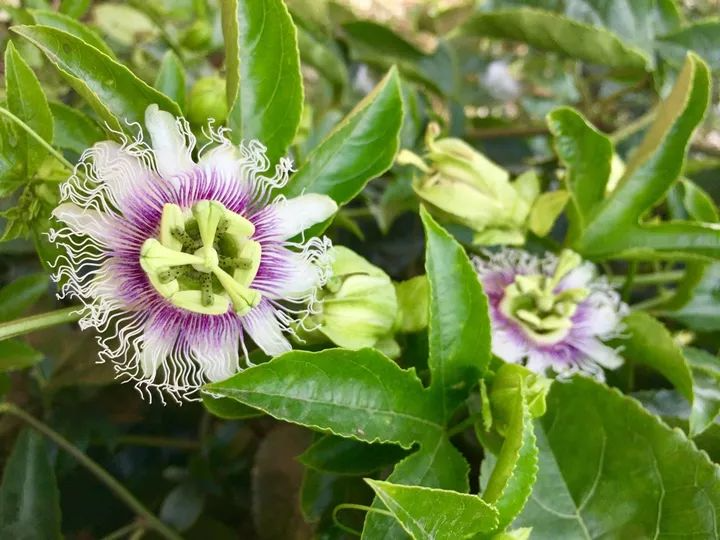
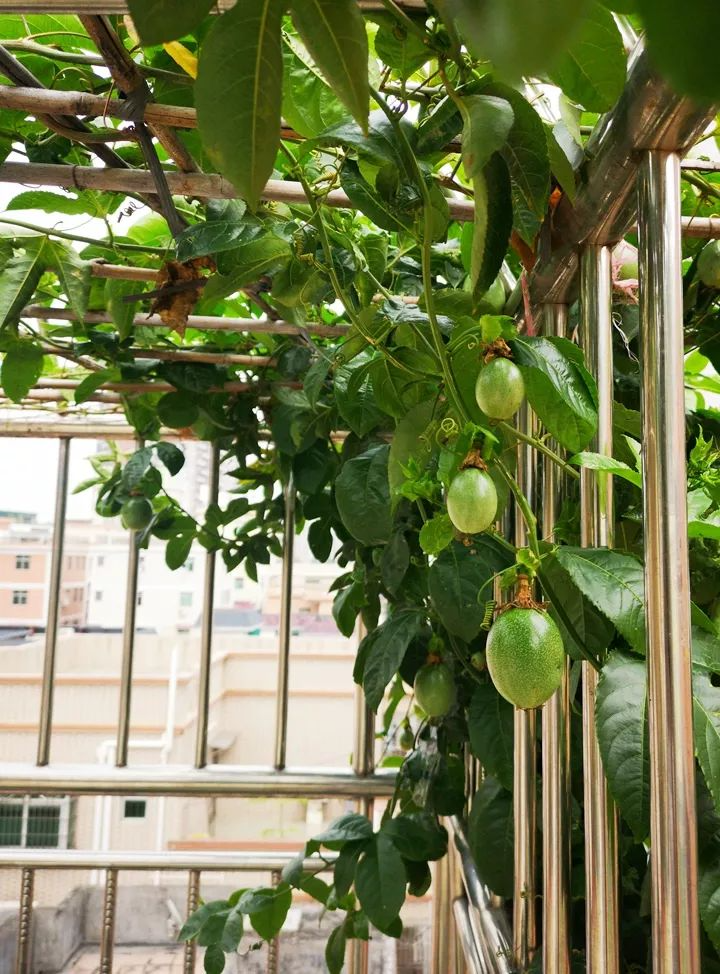
Maintenance focus:
Passion fruit can not only be sown, but also pruned and propagated. Now there are fewer bees, butterflies and insects, and the pollination rate of flowers is not good. People may need to use cotton swabs or soft-bristled brushes to sweep the stamens back and forth, and artificial pollination is required before fruit can be produced.
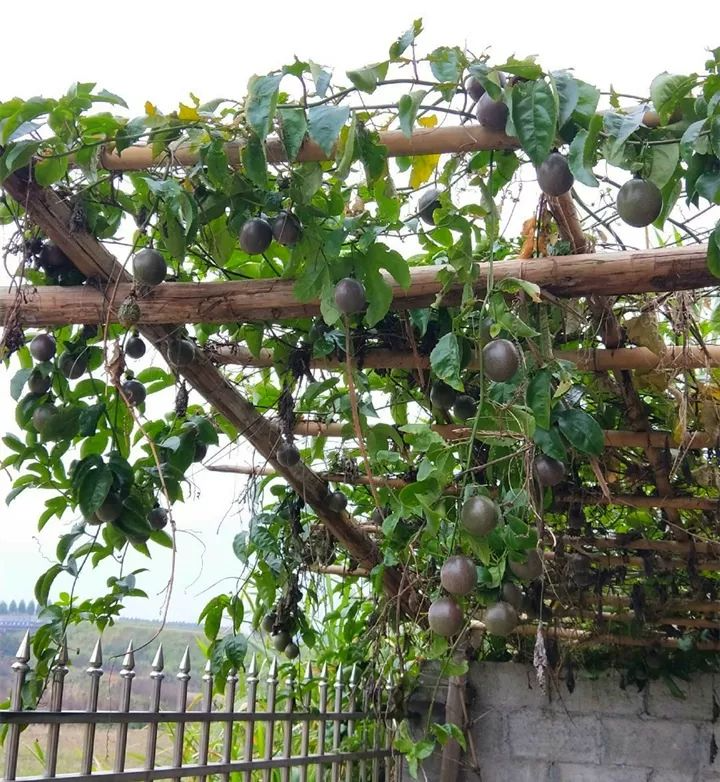
Extreme temperature: 38 degrees
Ginger lotus sprouts and blooms during the hottest time. It is called ginger lotus because its flowers resemble lotus. In fact, it is a kind of ginger. It can be planted in pots or in hydroponics. Its flowering period can last up to 5 months and it is very easy to grow in summer.
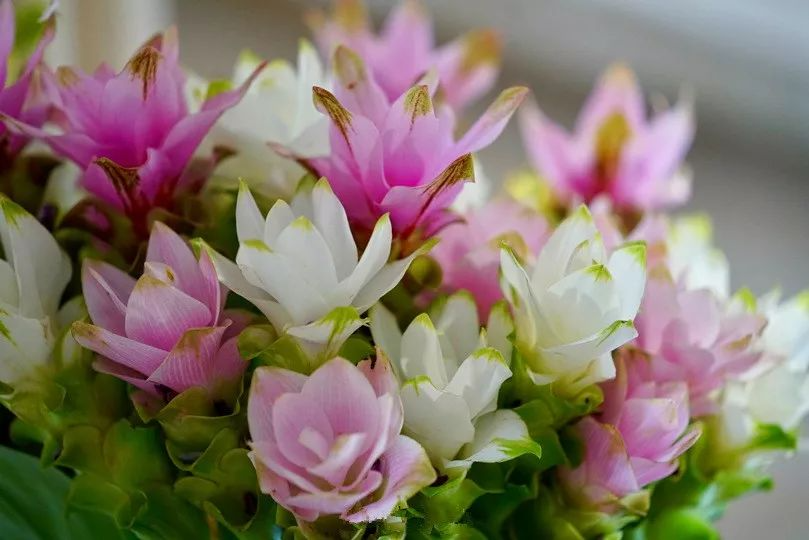
Image by: Qingyu Mofei